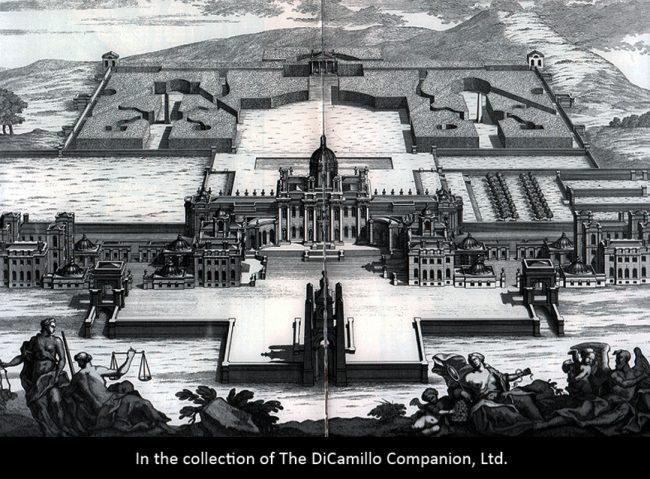
A 1725 bird's eye view of the north facade from "Vitruvius Britannicus." This design was never fully executed.
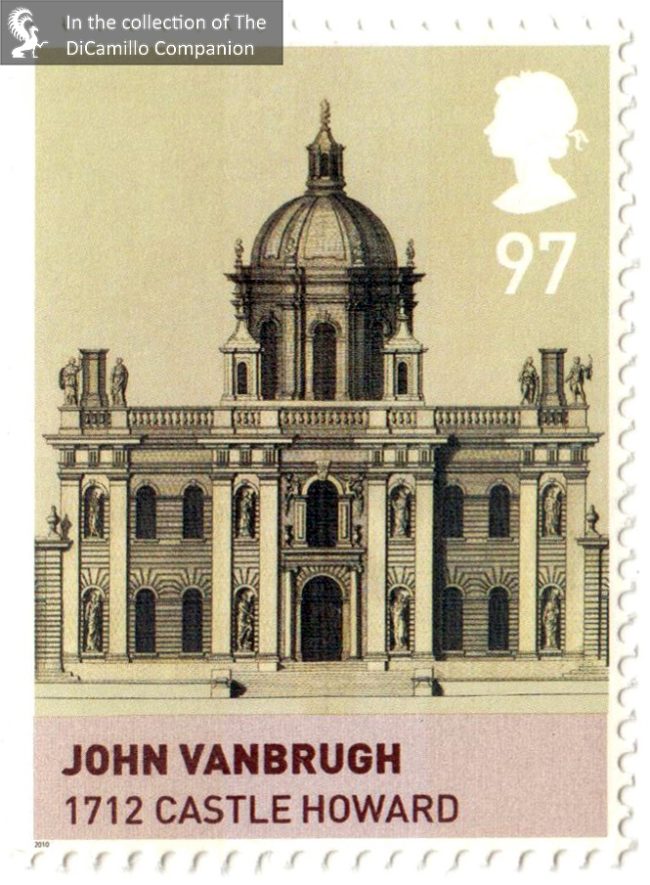
The central block of the house from a 2010 United Kingdom postage stamp
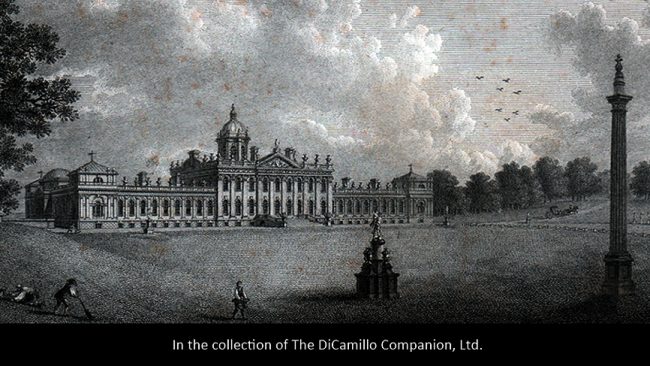
The south facade from a 1787 engraving
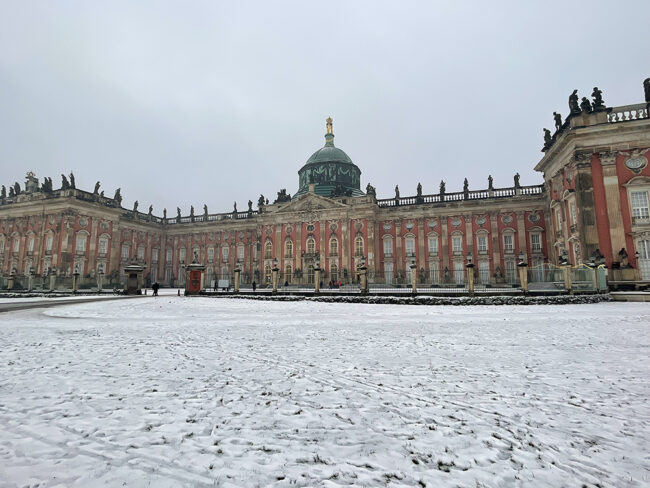
The New Palace, Potsdam. Built by Frederick the Great 1763-69, this Prussian Baroque palace was inspired by Castle Howard.
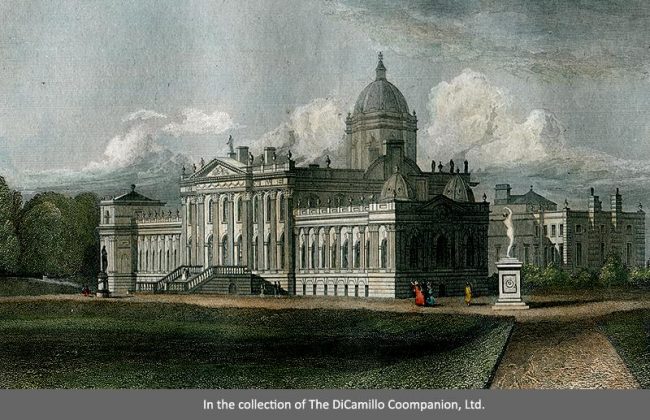
The south facade from "Meyer's Universum," 1839.
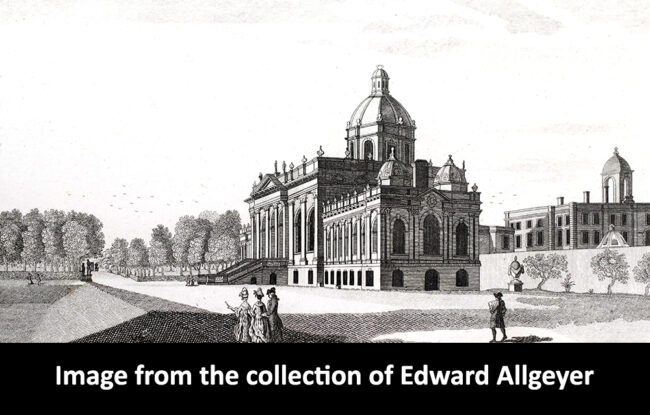
A 1780s engraving of the south facade from "The Complete English Traveller"
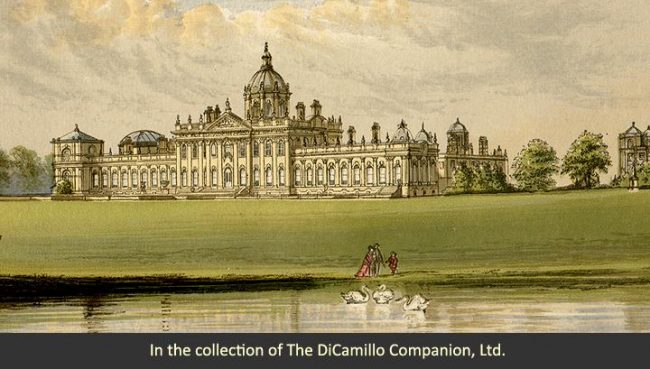
The south facade from the 1880s publication "Morris's Views of Seats"
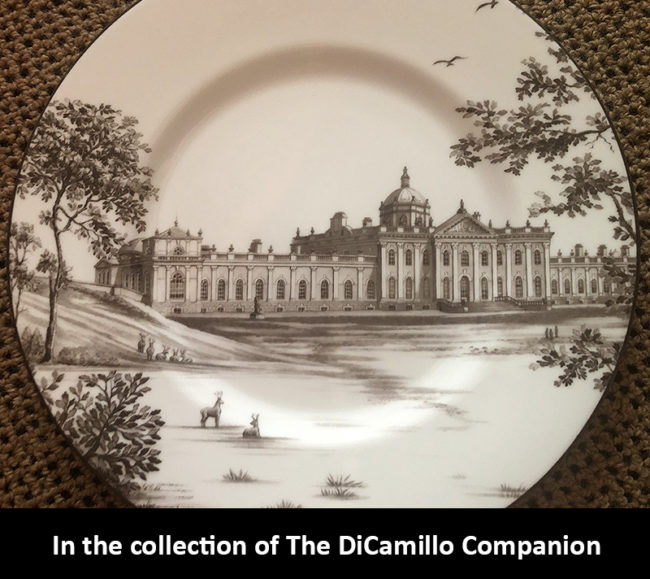
The south facade from a circa 2017 Wedgwood dinner plate
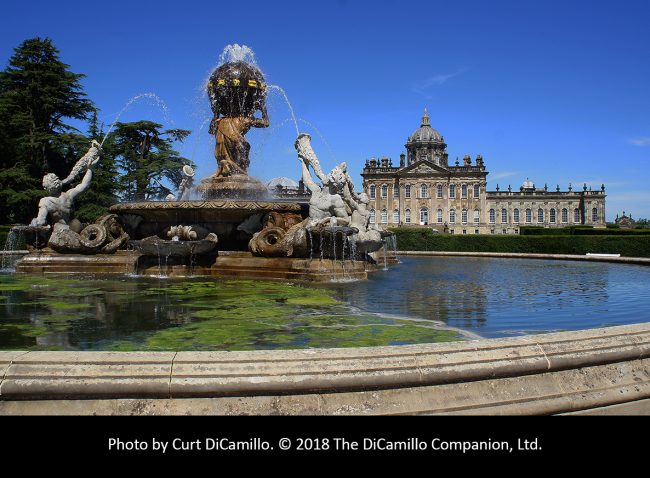
The south (garden) facade
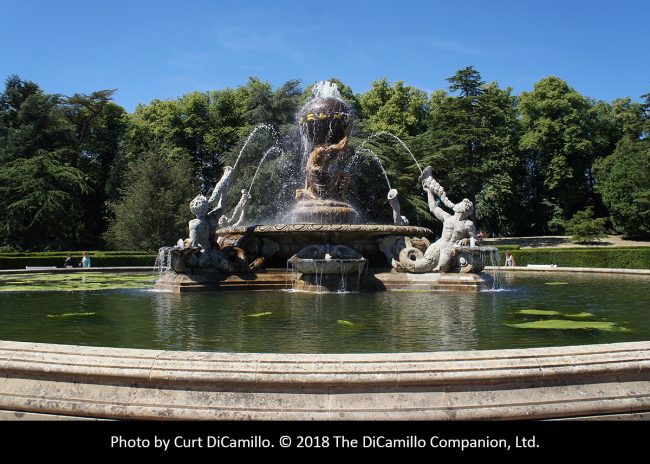
The famous Atlas Fountain
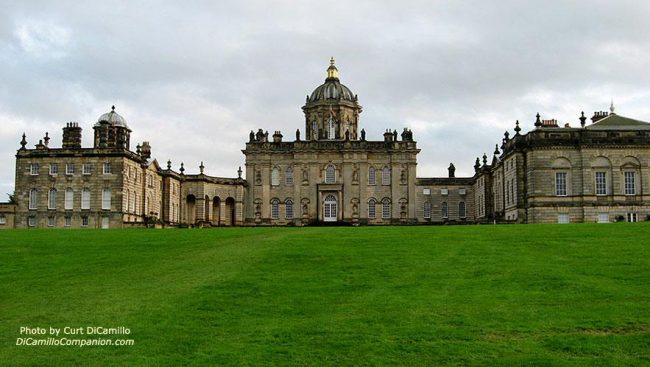
The north facade
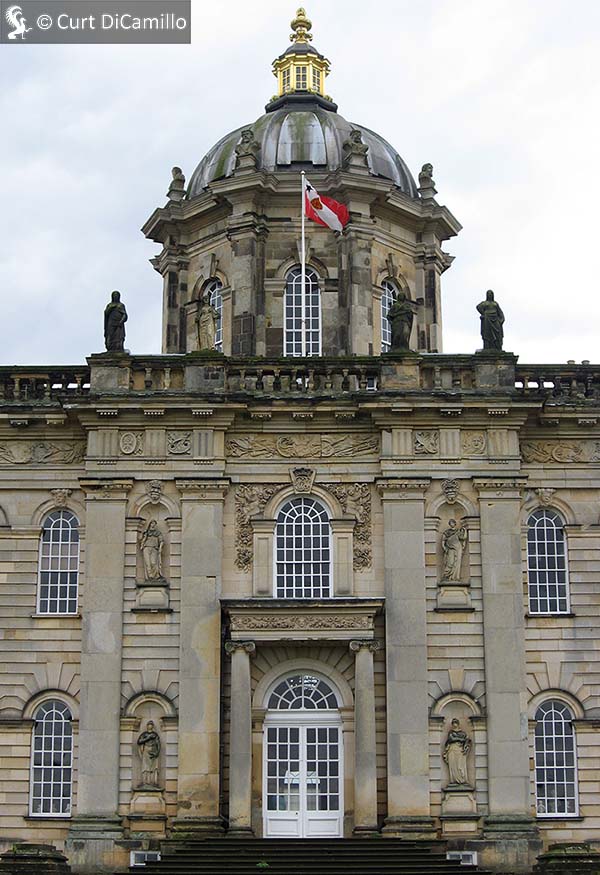
Detail of the north facade
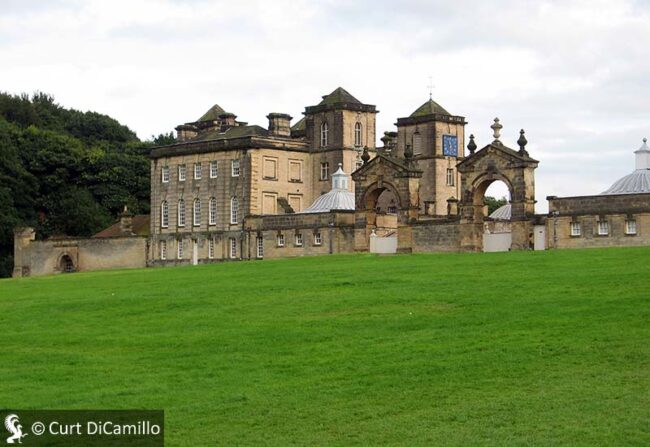
The left section of the north facade
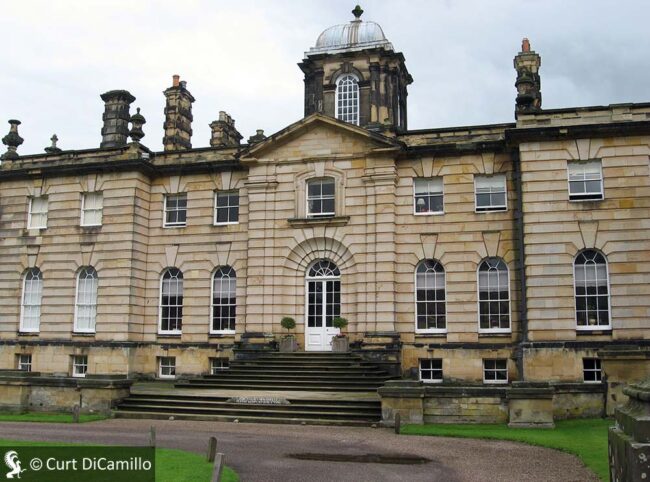
The chapel wing in the north facade
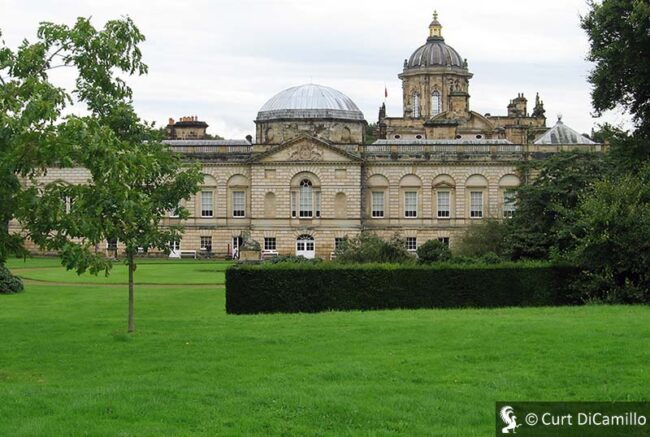
The west wing
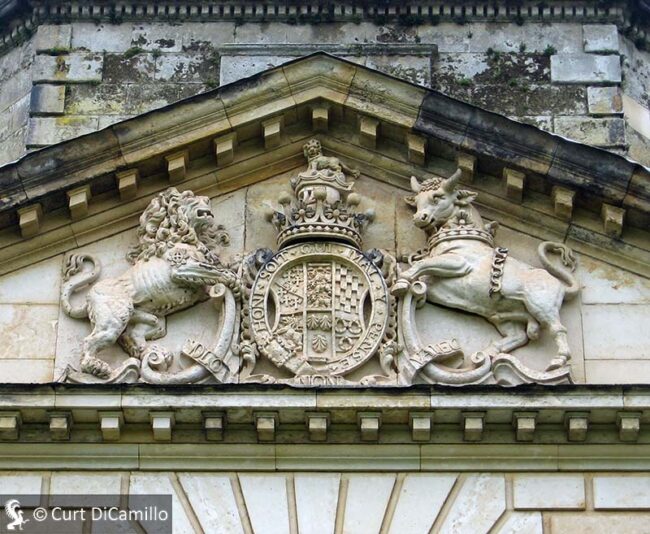
Arms in tympanum of the west wing
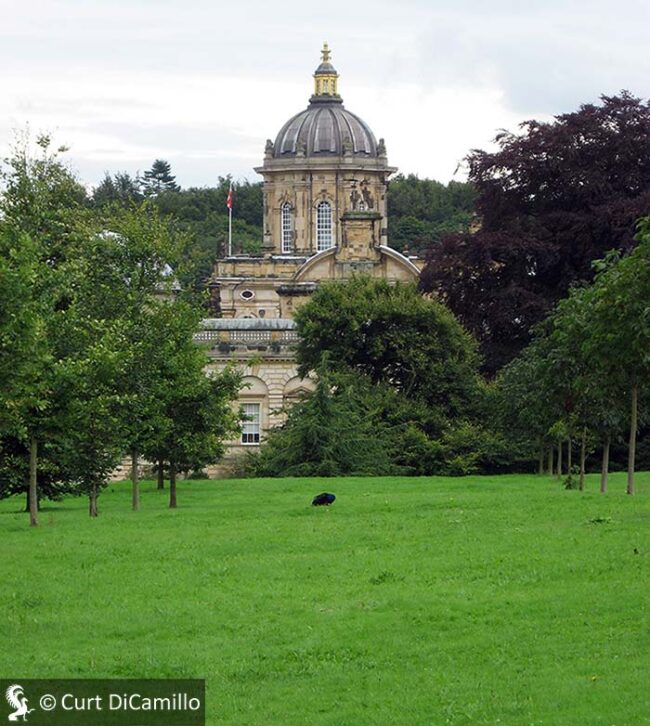
The famous dome
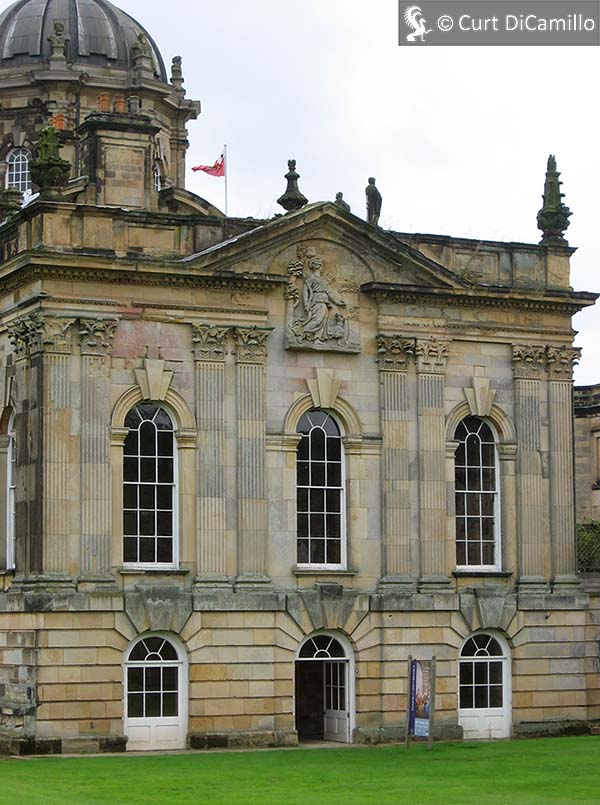
The exterior of the southeast wing
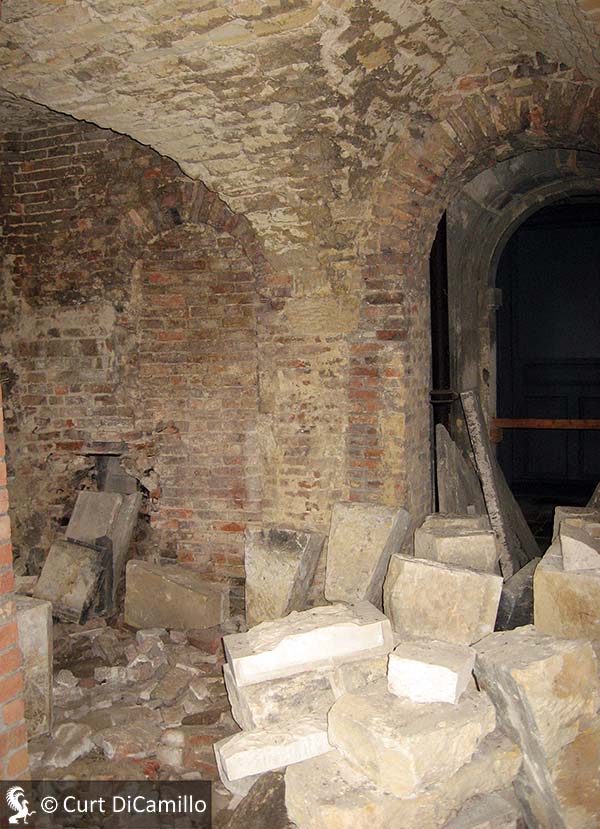
The interior of the southeast wing
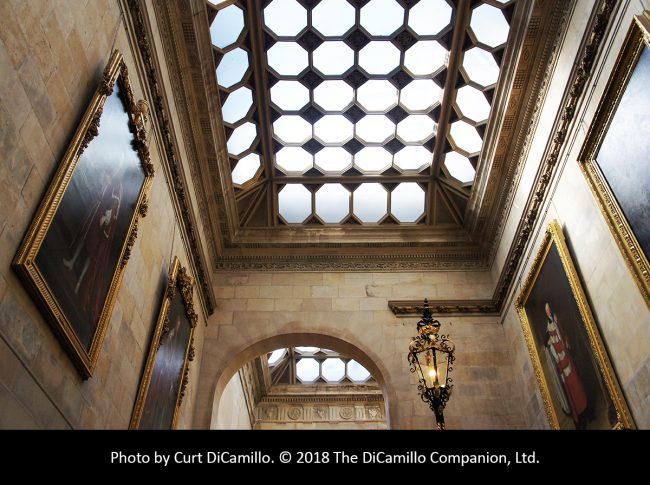
The entrance hall staircase
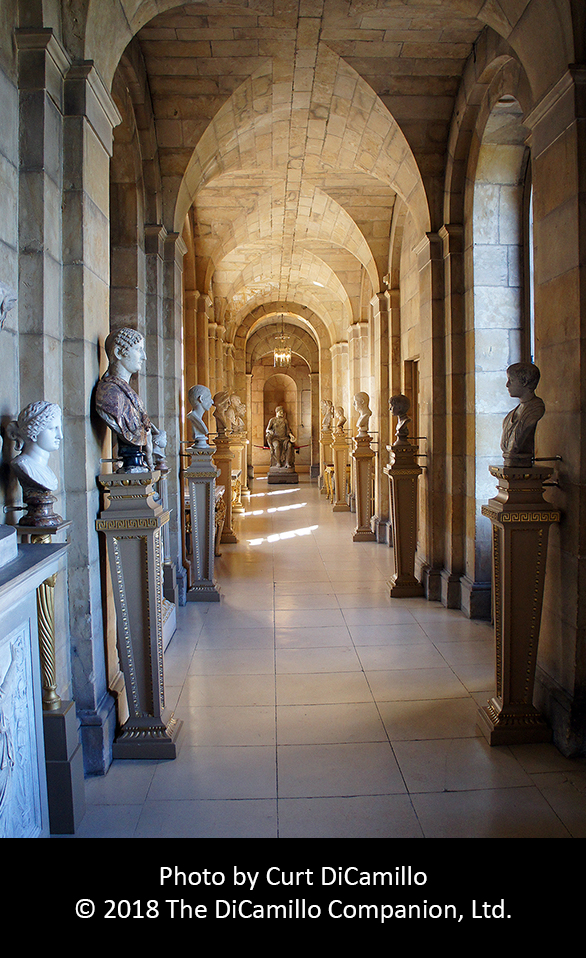
The Antique Passage
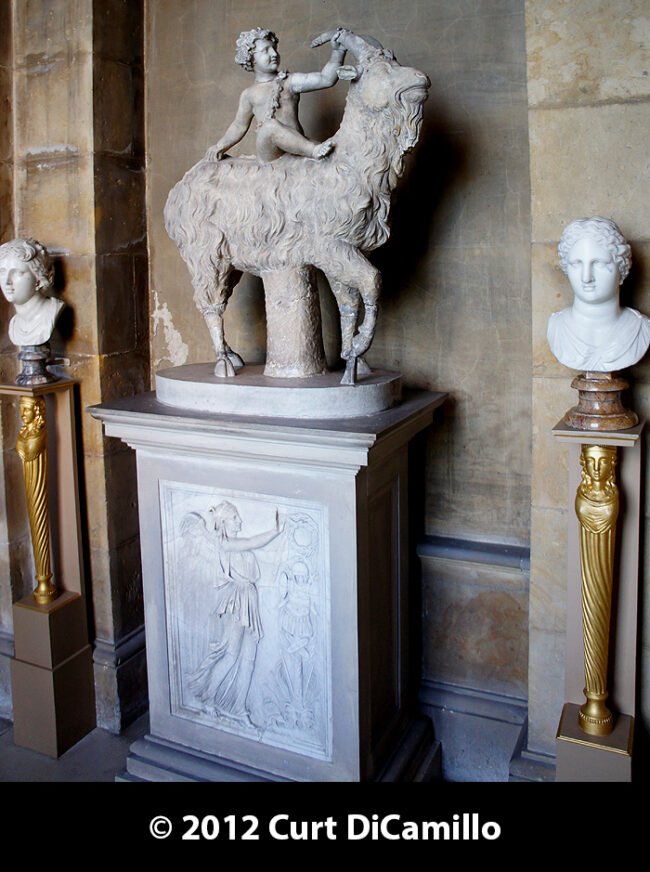
"Boy With Goat," 2nd century AD, Roman, in the Antique Passage.
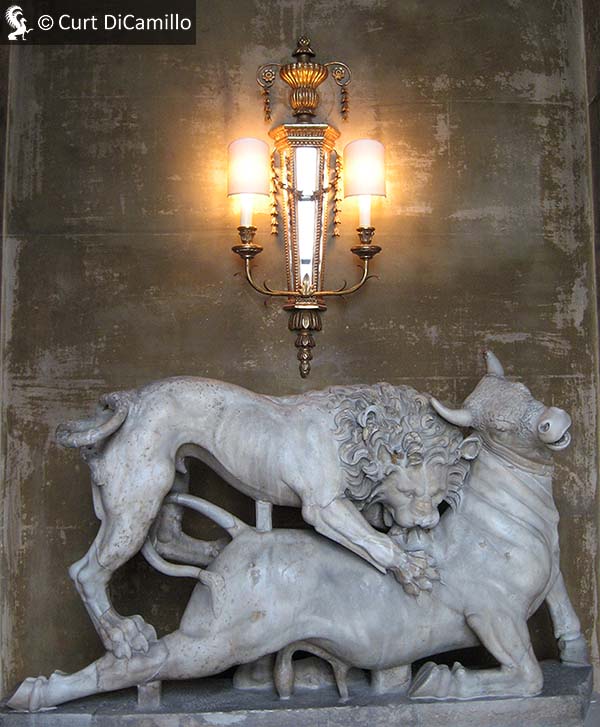
Lion attacking a bull, Roman, 1st century AD, in the Antique Passage. One of a pair acquired by Henry Howard, 4th Earl of Carlisle, in Italy, circa 1740, first recorded at Castle Howard in 1759. Today in the ownership of National Museums Liverpool.
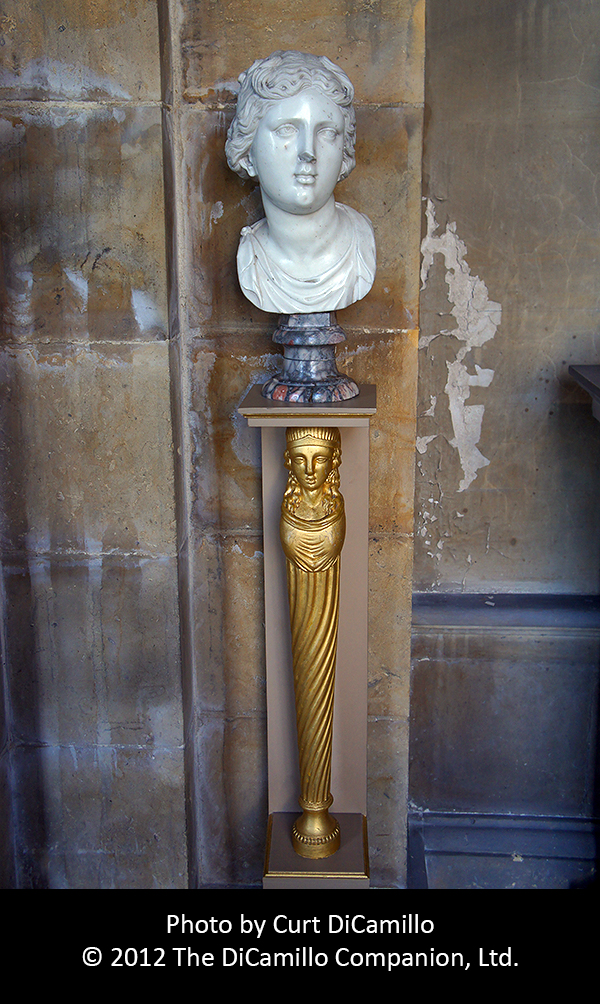
Bust of an unknown woman the Antique Passage. This is probably a 16th century copy of an ancient Roman sculpture.
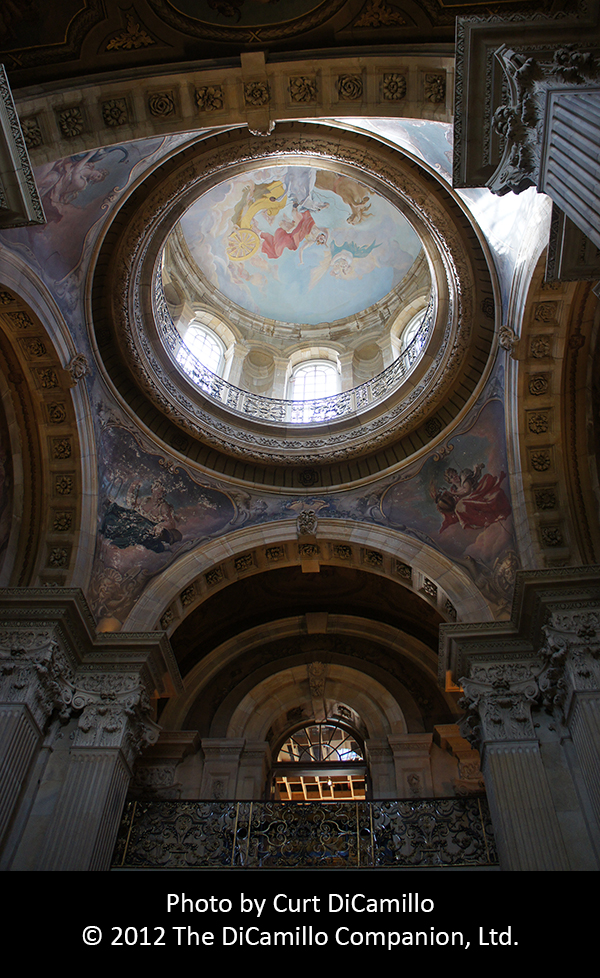
The Great Hall and the dome
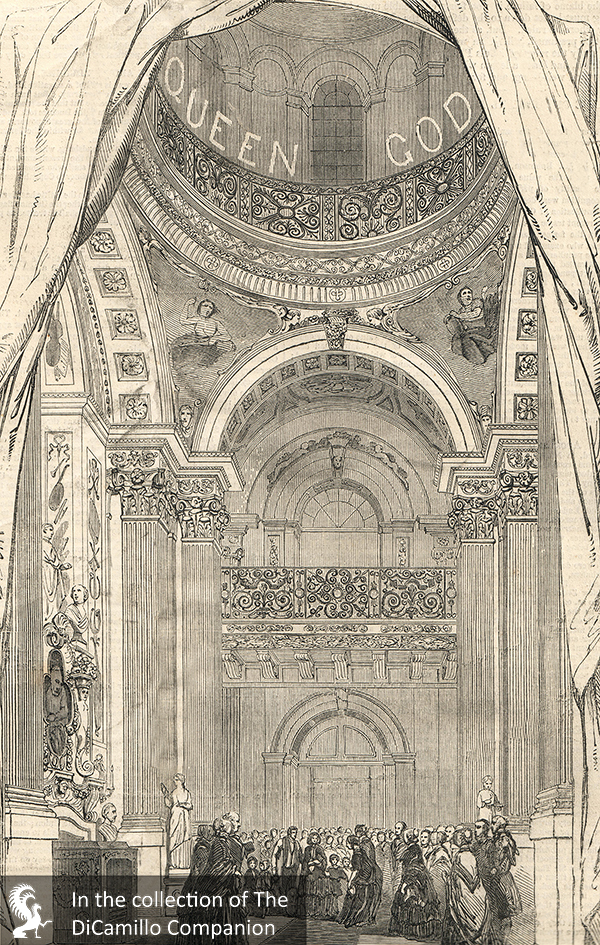
The Great Hall decorated for Queen Victoria's visit from the Aug 31, 1850 edition of "The Illustrated London News"
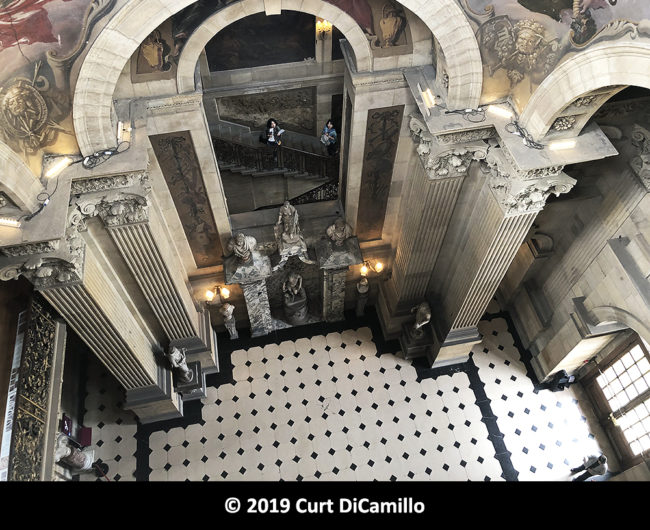
View of the Great Hall from the dome
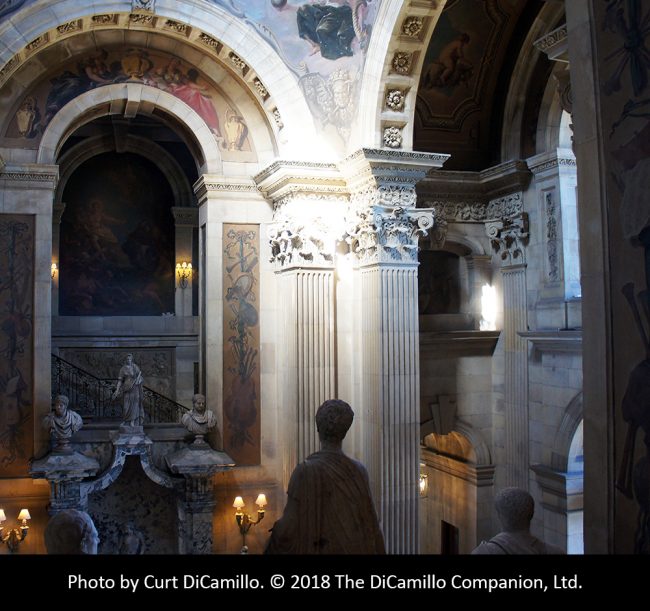
The Great Hall
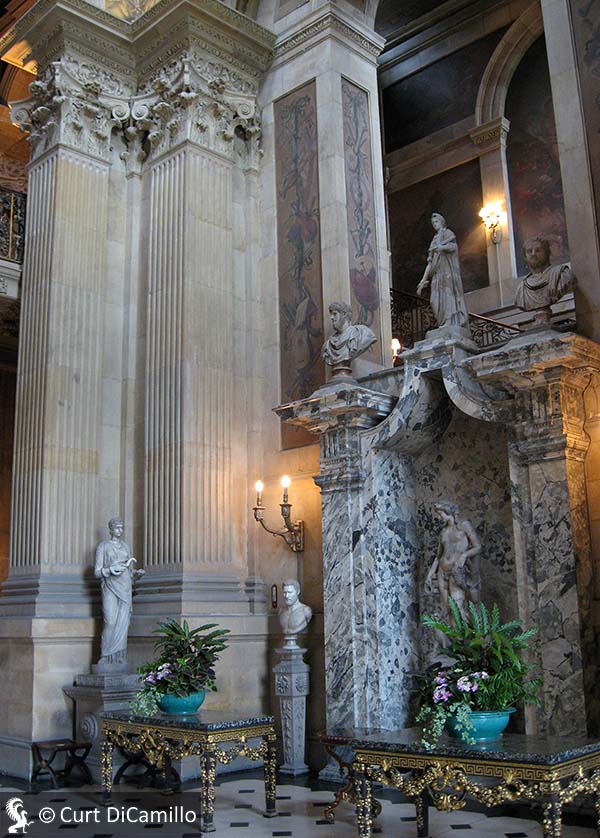
The Great Hall
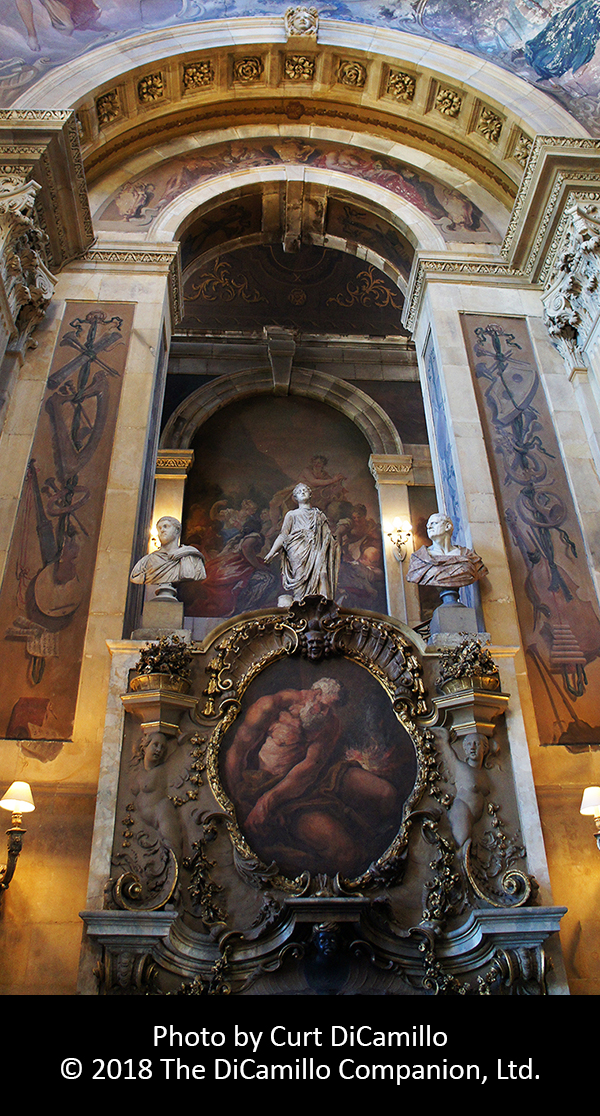
The Great Hall
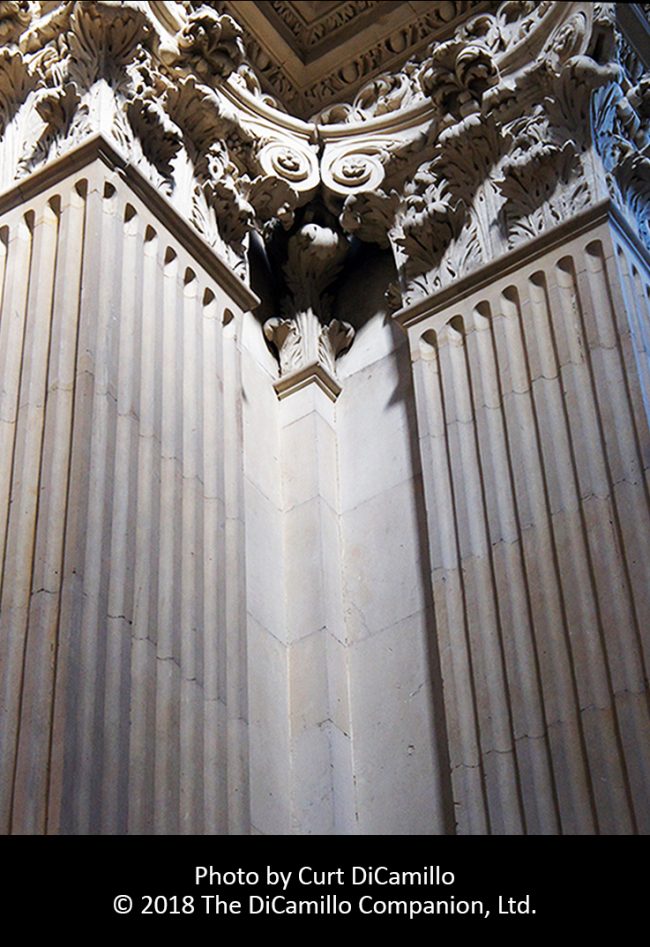
Stone pilasters in the Great Hall
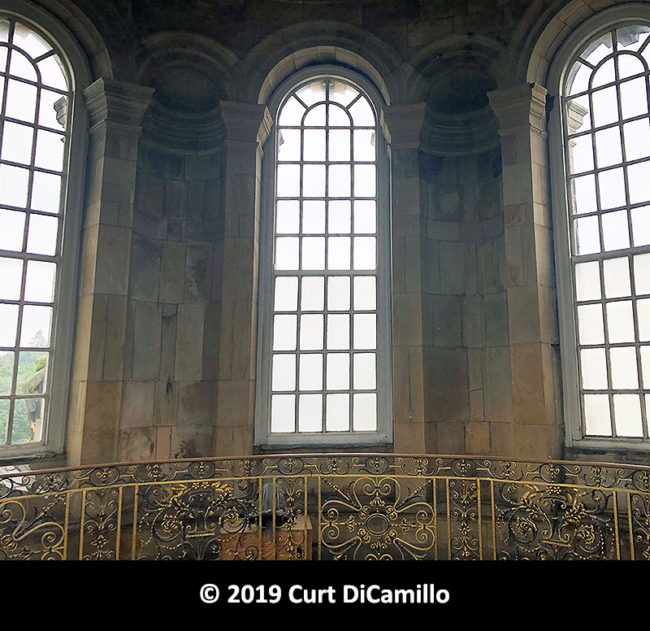
Interior of the dome
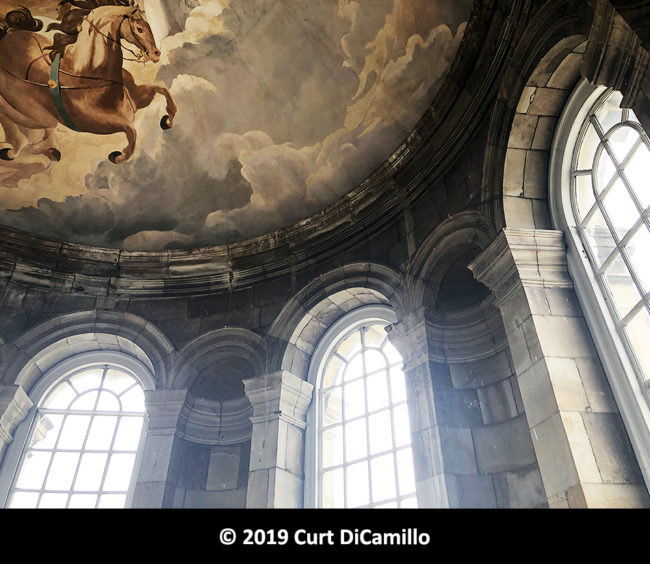
Interior of the dome
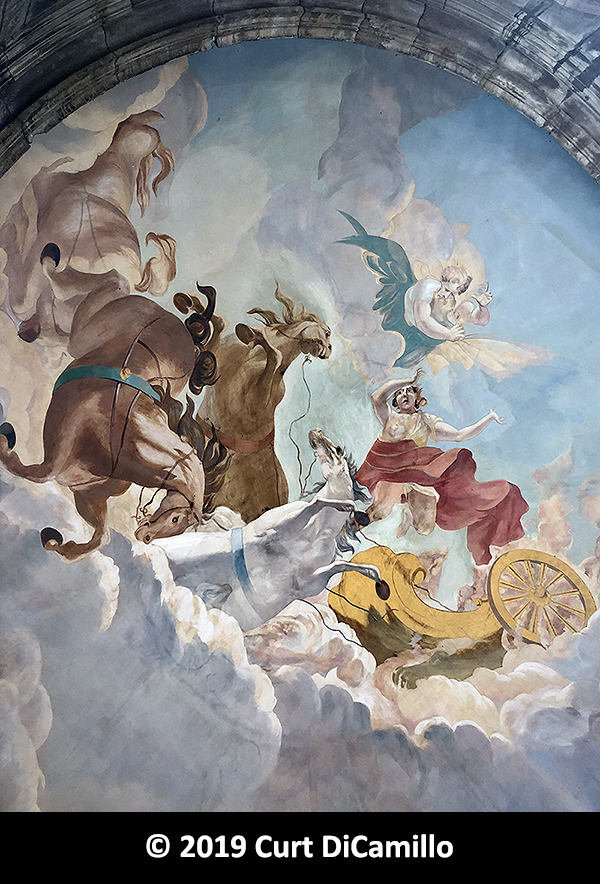
Detail of Canadian artist Scott Medd's 1960 restoration of Pellegrini's fresco of Phaeton falling from his father's chariot on the interior of the dome
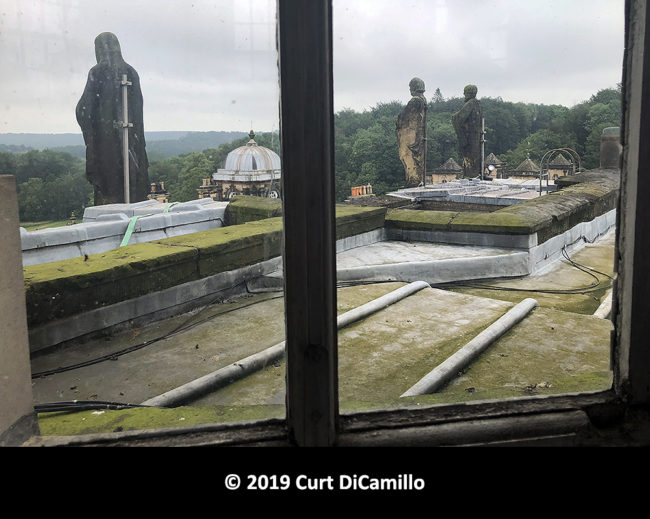
View of the rooftop from the dome
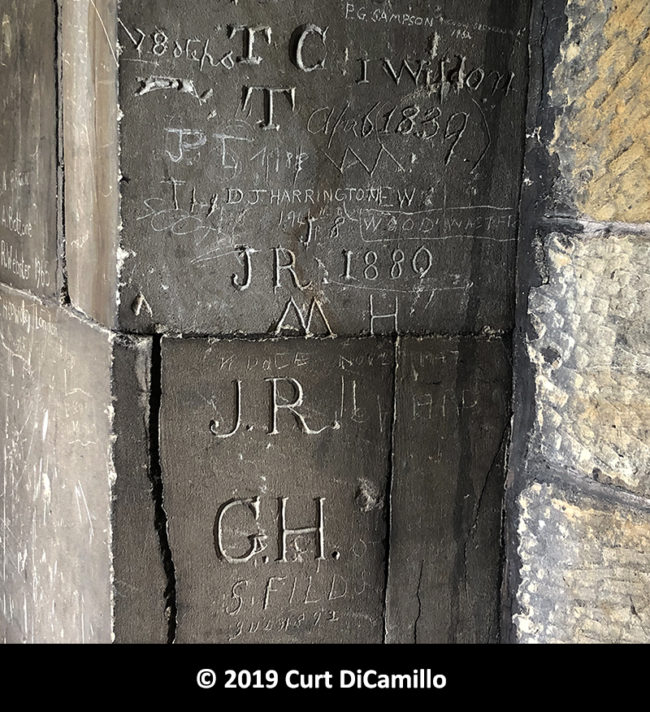
Graffiti on stonework inside the dome
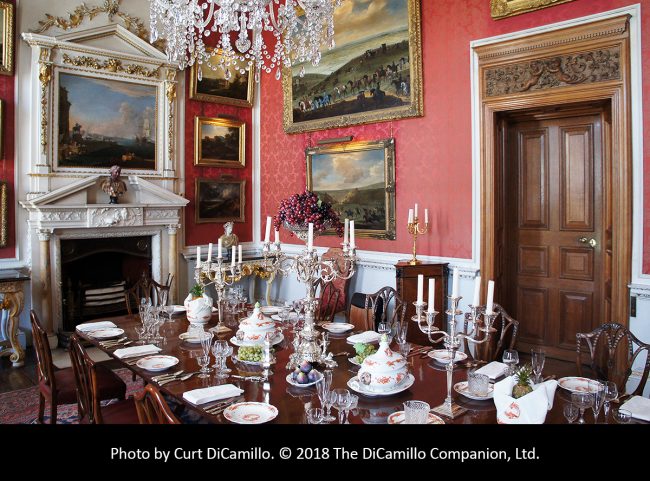
The Crimson Drawing Room
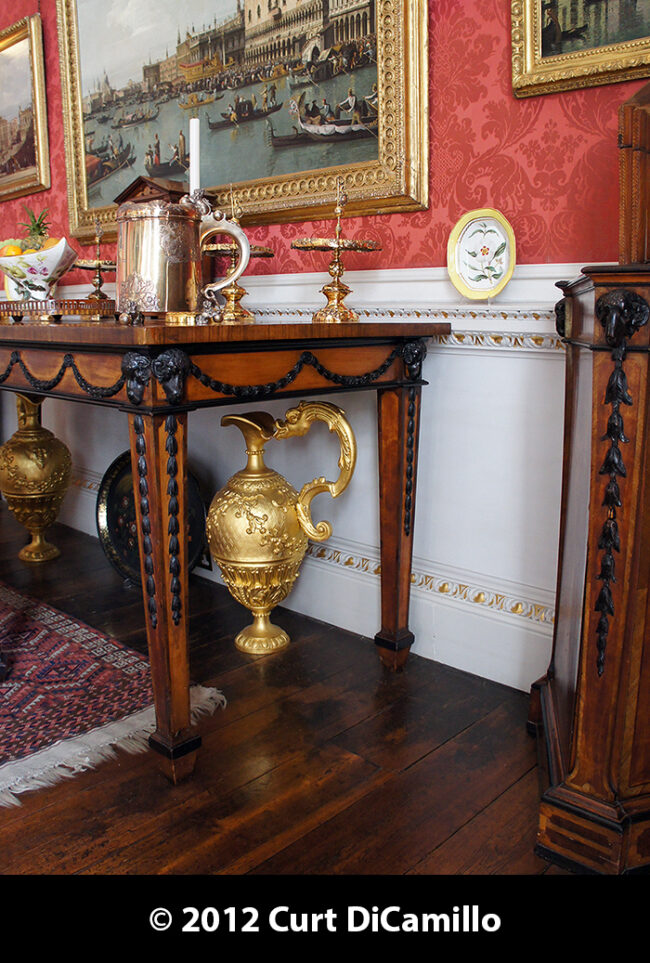
The Crimson Dining Room, with a Bellotto of the Bucintoro on Ascension Day over the circa 1775 English table, with George I giltwood ewers underneath.
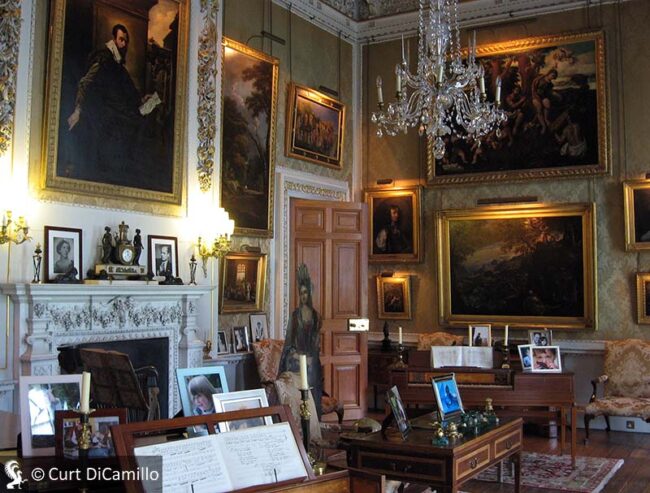
The Music Room
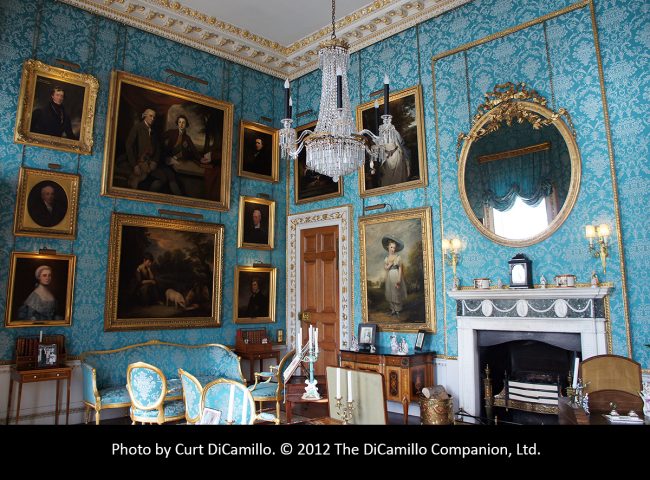
The Turquoise Drawing Room
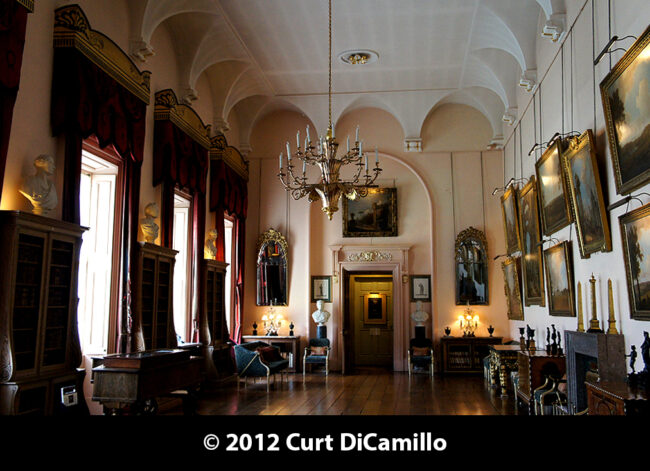
The Long Gallery
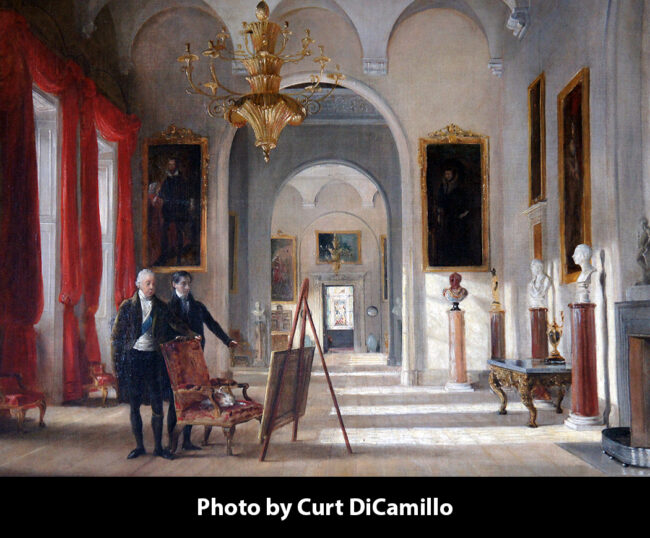
"The 5th Earl of Carlisle and His Son in the Long Gallery," John Jackson, circa 1810.
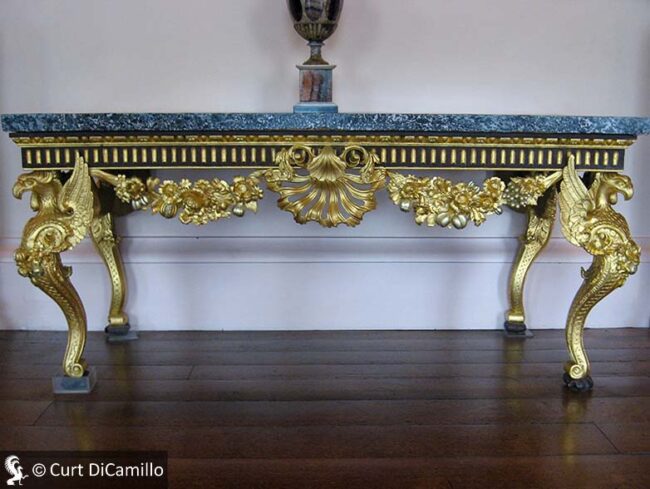
One of a pair of tables, in the manner of Henry Flitcroft, in the Long Gallery. Probably mid-18th-century, with Peterhead granite tops, above fluted friezes centered on open carved shells, flanked by fruit and flower festoons, supported on eagle headed monopodia carved with flowers.
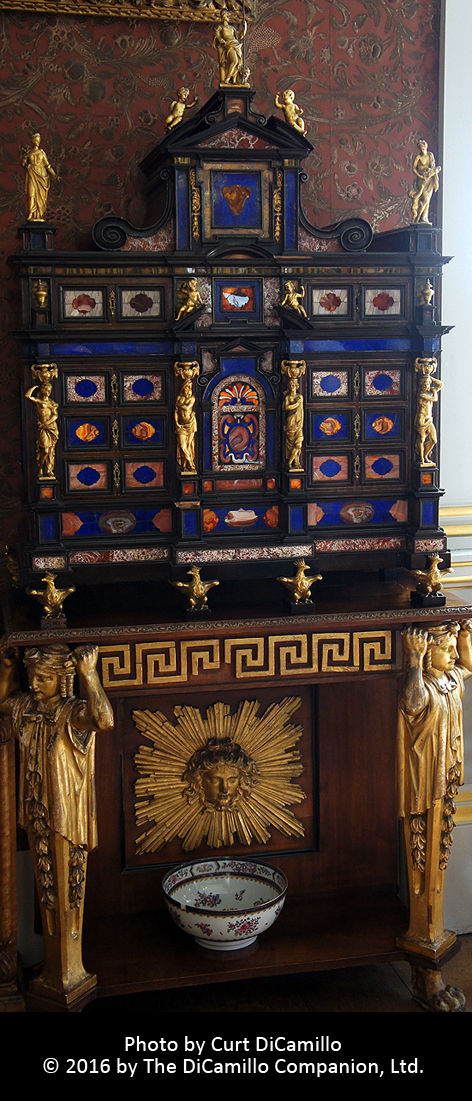
One of a pair of pietre dure Roman cabinets at Castle Howard; today in the collection of The Fitzwilliam Museum.
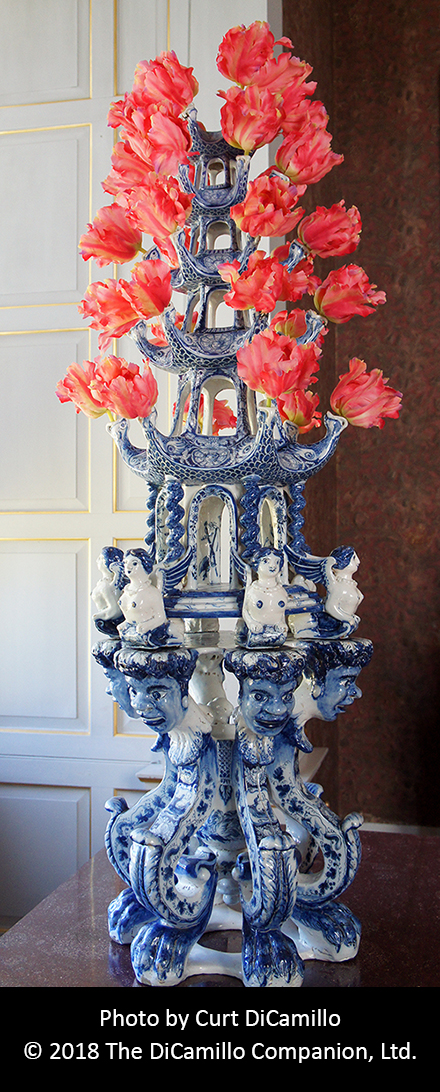
Delft flower pagoda, circa 1695. At 57.5 inches, this enormous piece is just under five feet tall.
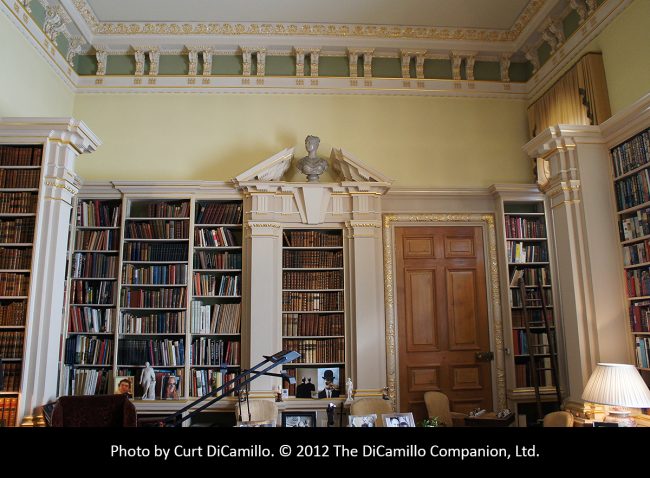
The private library
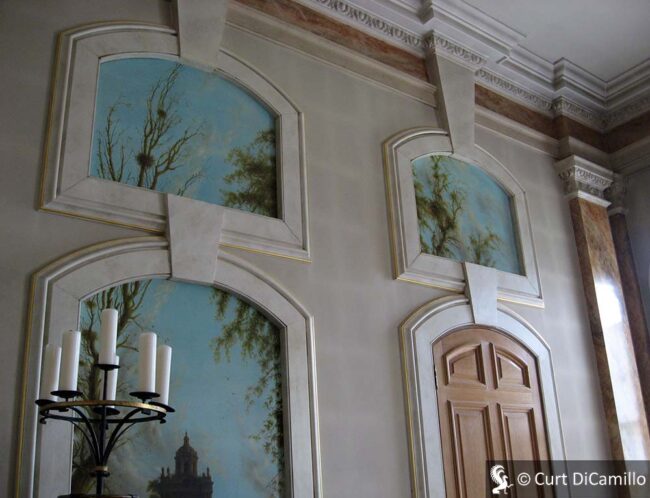
1980s murals by Felix Kelly in the garden room
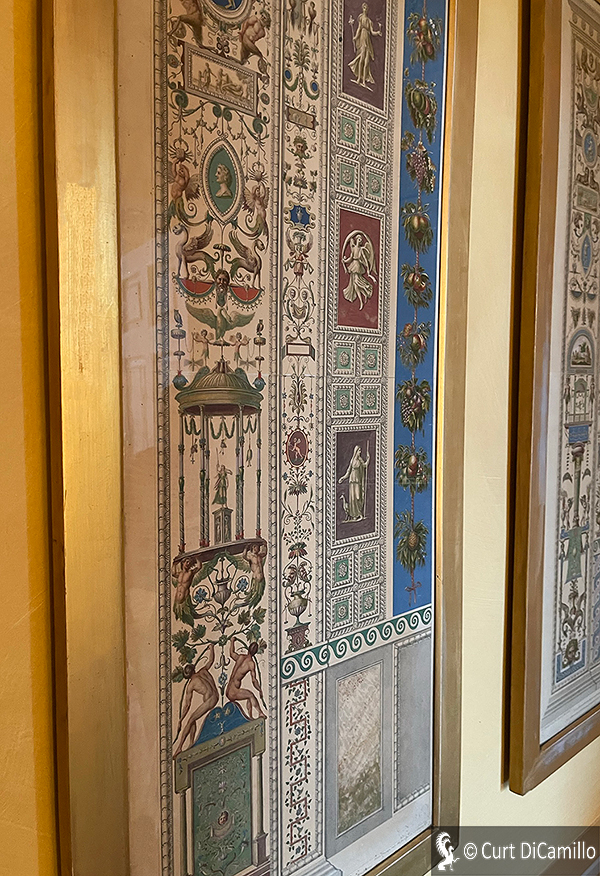
One of the prints in the Castle Howard bedroom passage leading to Lady Georgiana's bedroom. This hallway is hung with a collection of 18th century prints of Raphael's decorations for the Vatican Loggia.
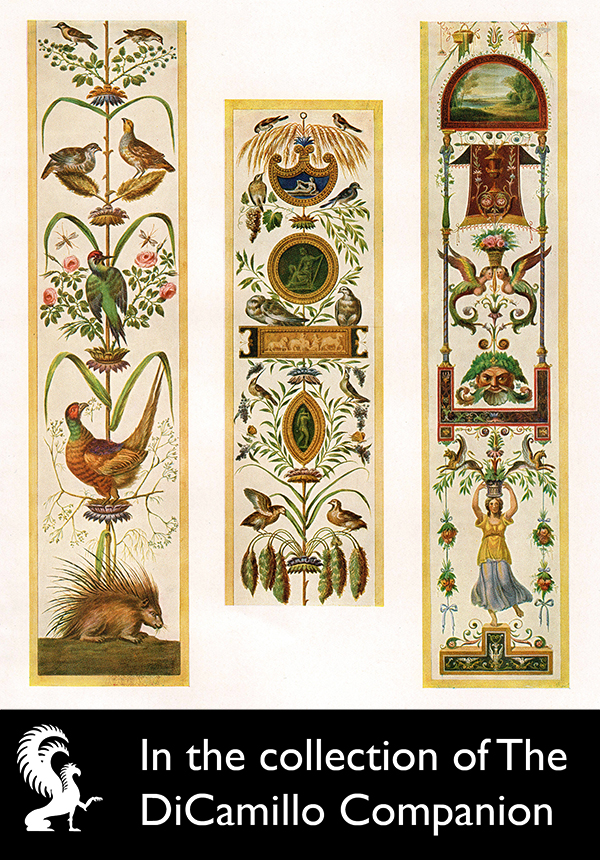
A 1920 illustration of some of Raphael's decoration for the Vatican Loggia.
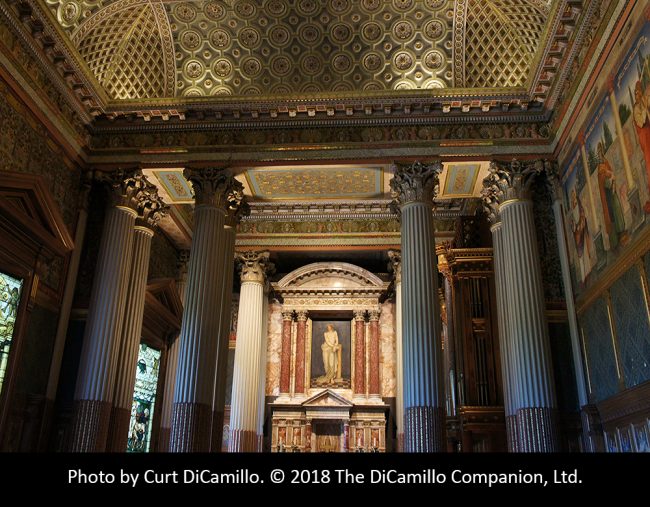
The chapel
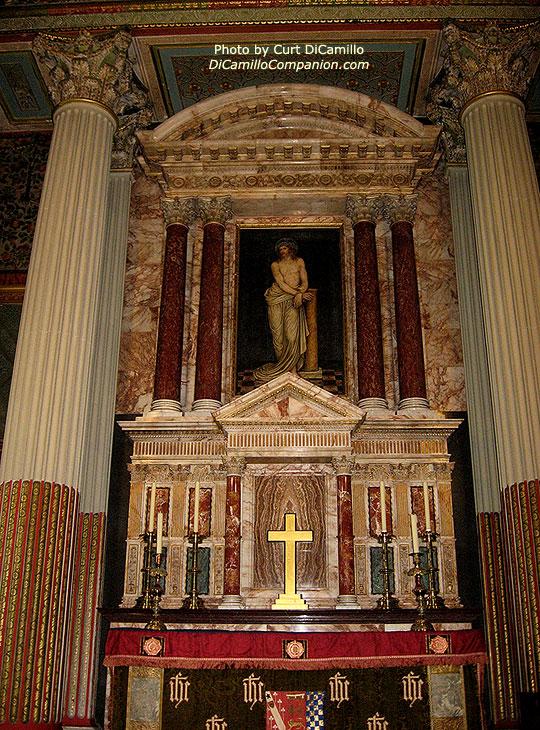
The chapel altar
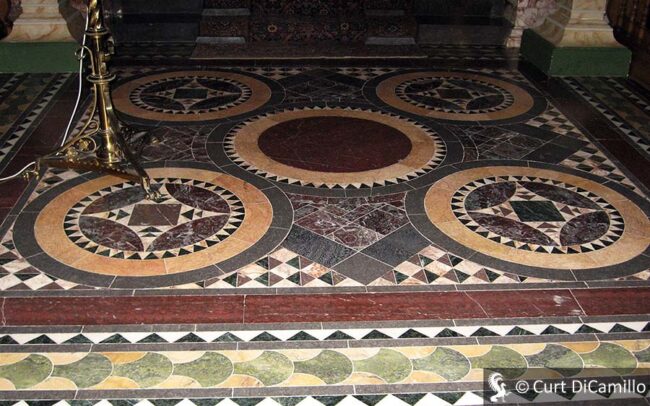
Altar floor in the chapel
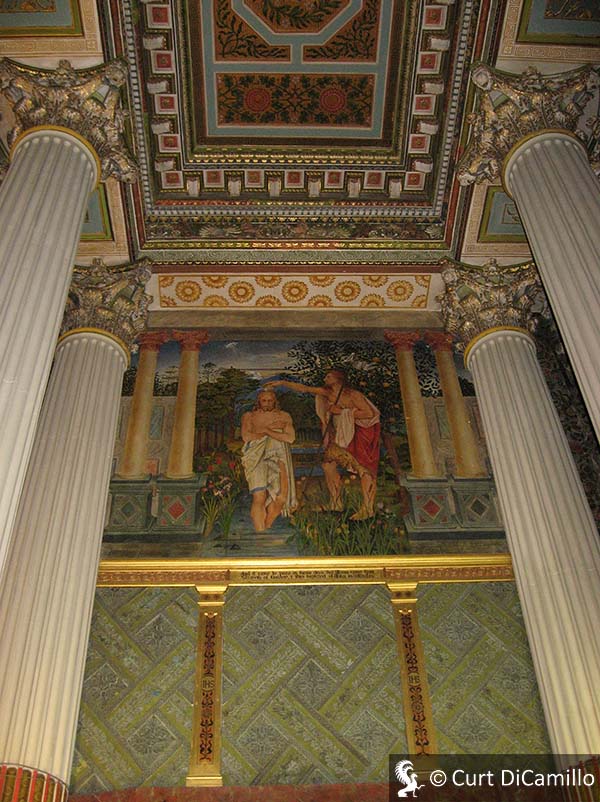
The chapel
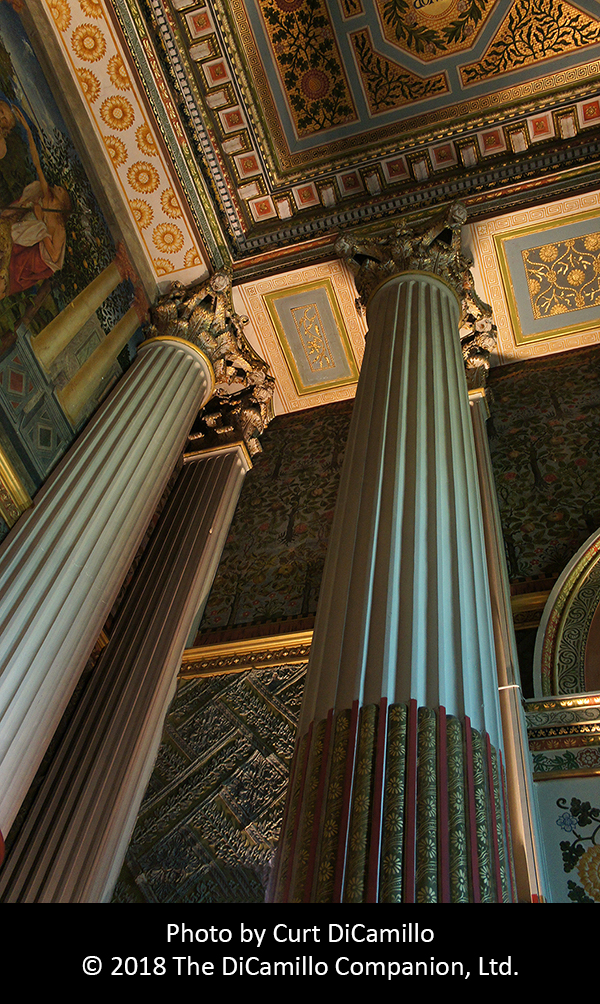
Chapel columns
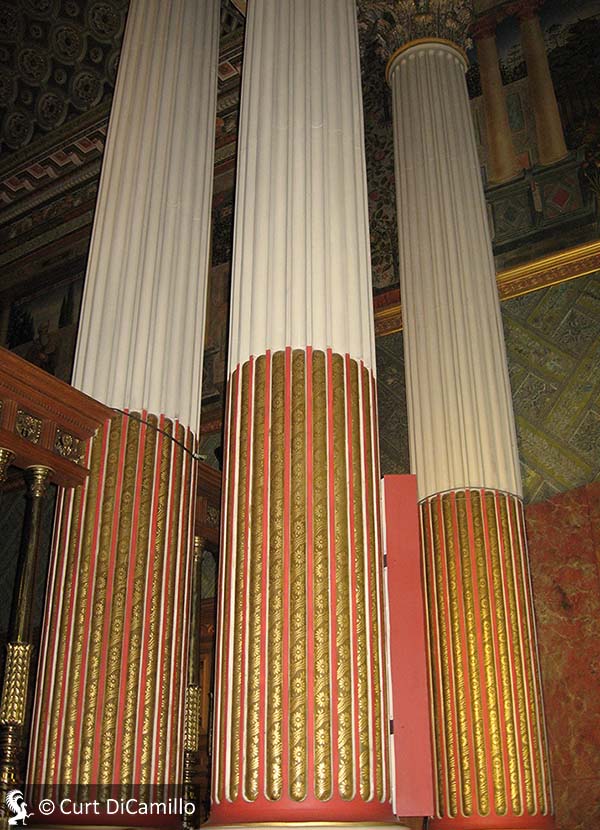
Chapel columns
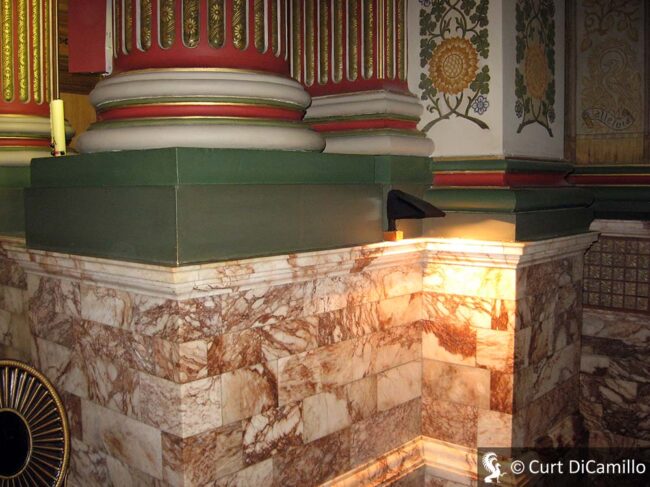
The chapel

Chapel wall
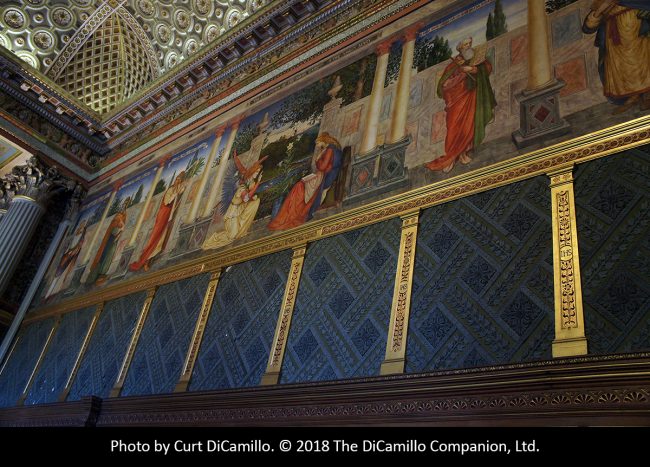
Chapel wall
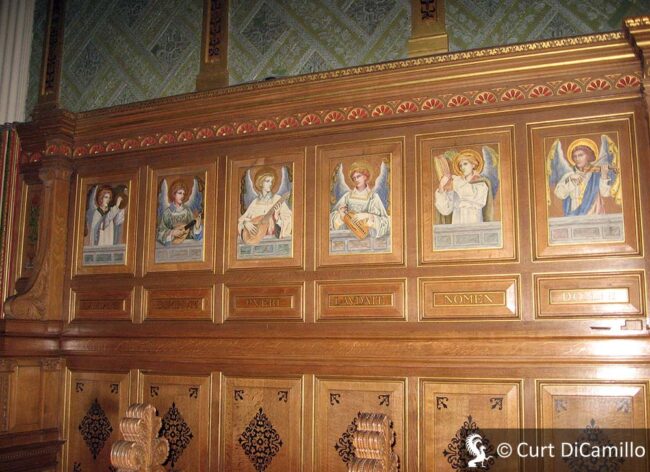
Chapel wall
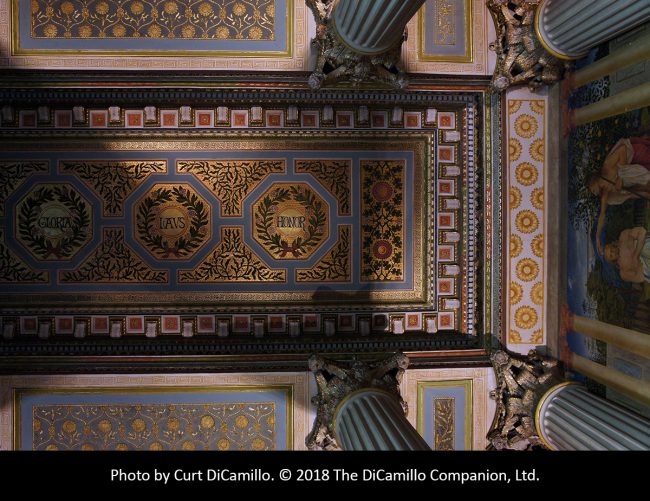
Chapel ceiling
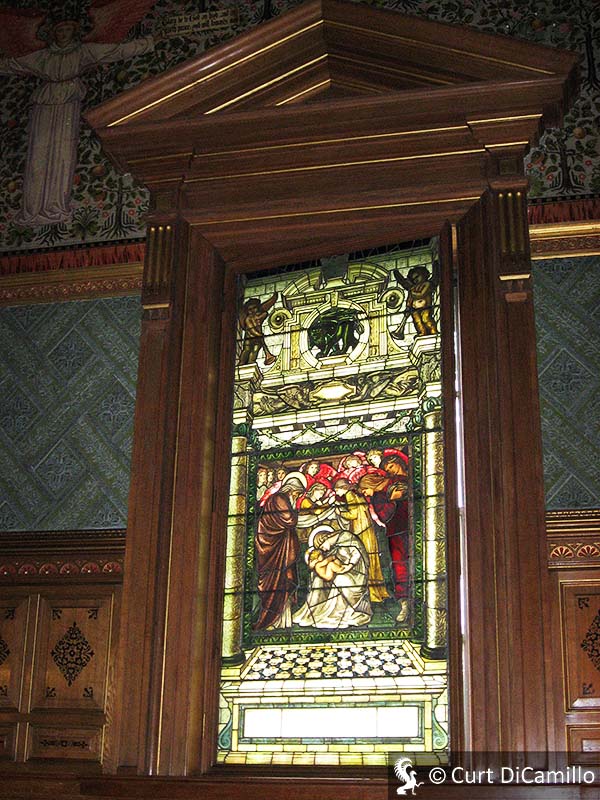
Burne-Jones stained glass in the chapel
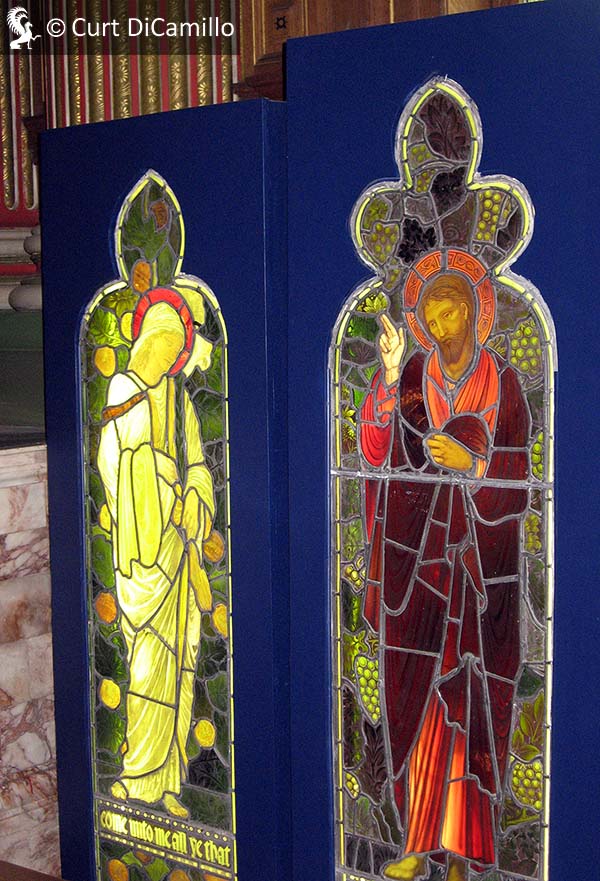
Burne-Jones stained glass in the chapel
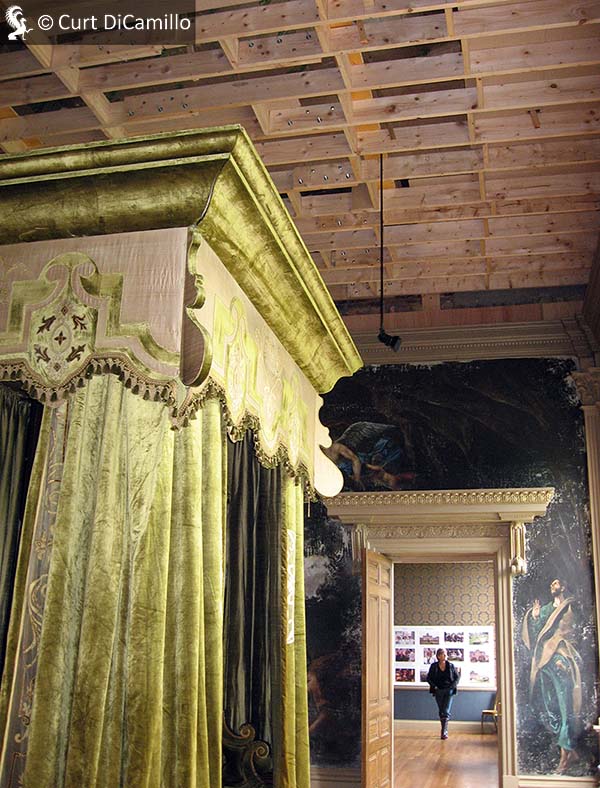
The set created in the southwest wing for Lord Marchmain's bedroom from the 2008 production of "Brideshead Revisited"
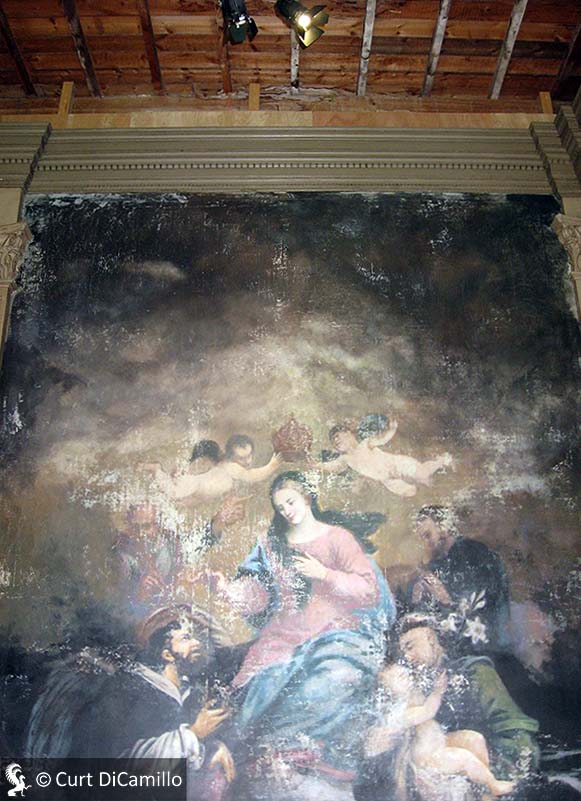
The set created in the southwest wing for the 2008 production of "Brideshead Revisited"
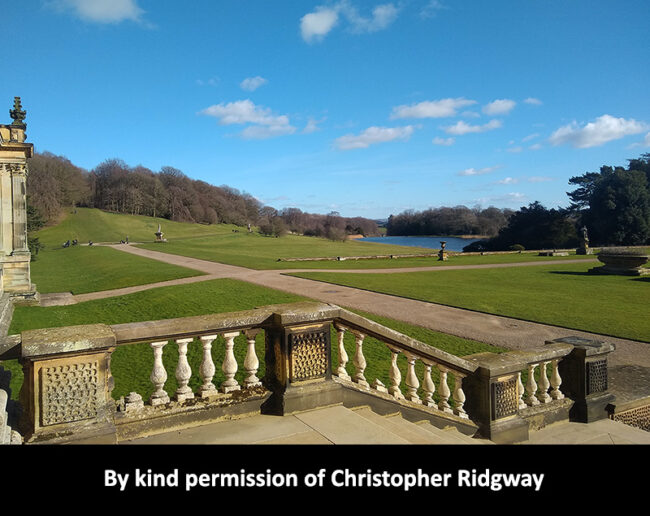
The view toward the garden from the south terrace, with the dome of the mausoleum visible in the far distance.
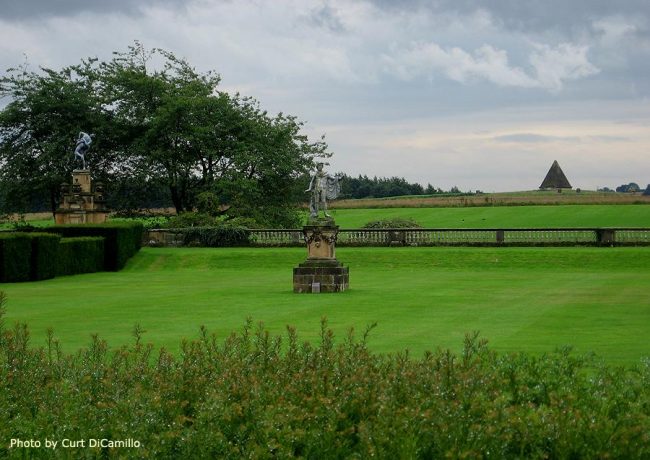
The garden from the south facade
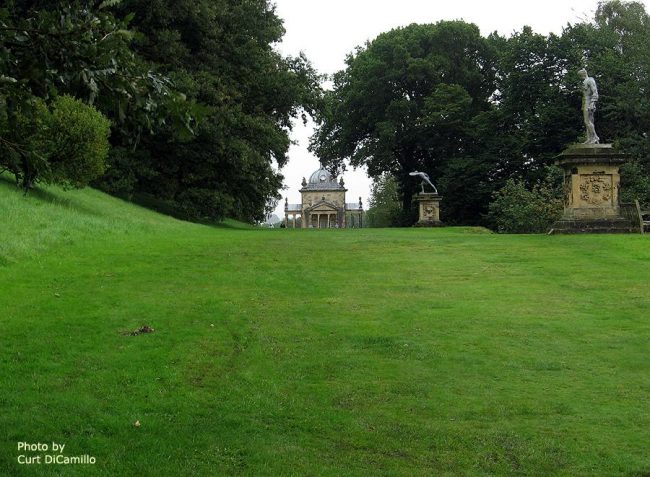
The walk to the Temple of the Four Winds
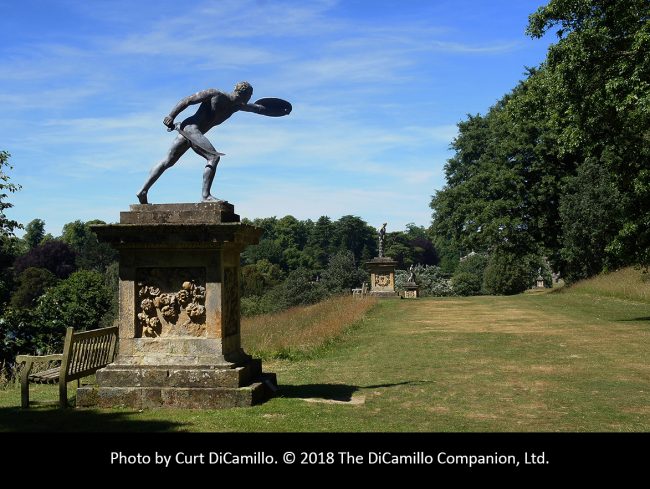
The walk to the Temple of the Four Winds
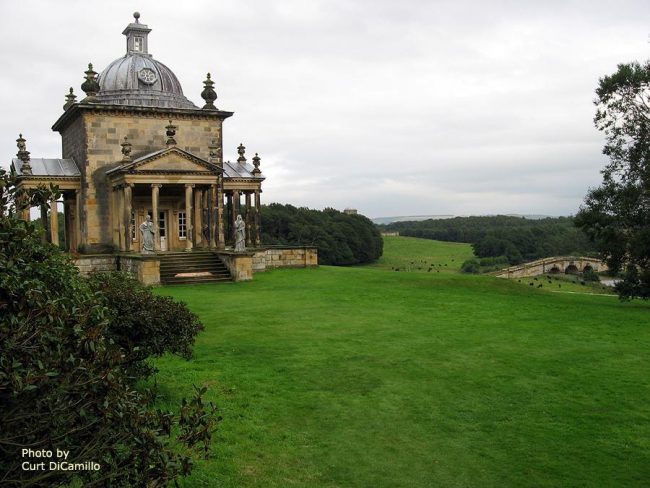
The Temple of the Four Winds
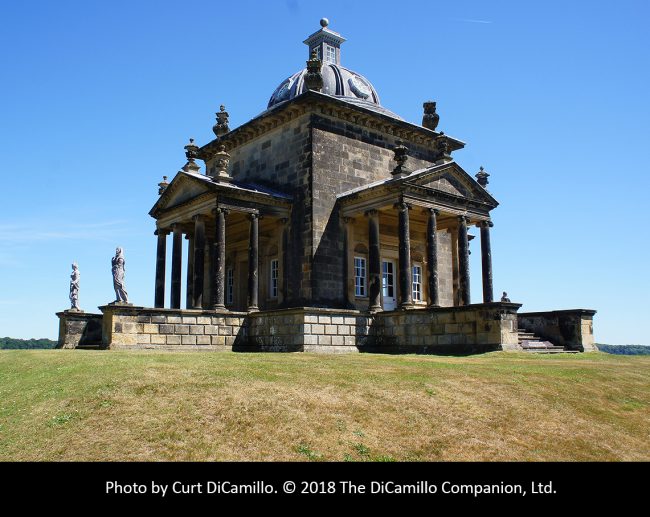
The Temple of the Four Winds
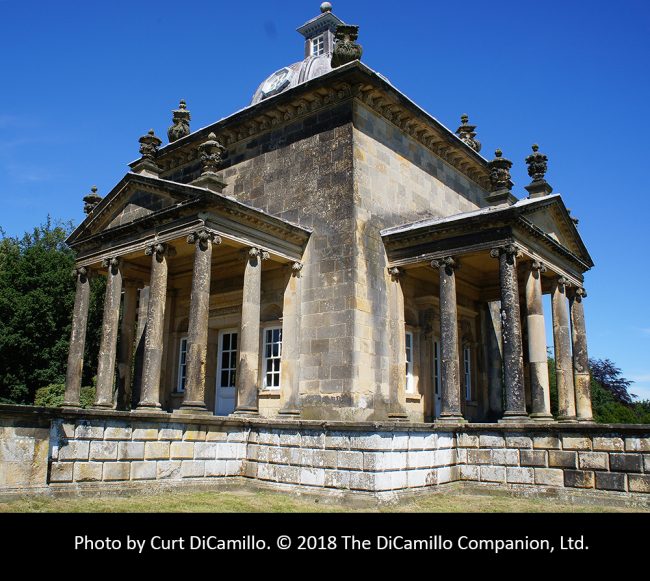
The Temple of the Four Winds
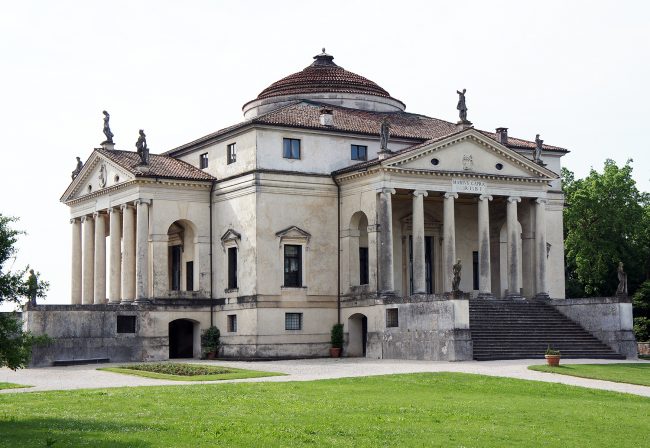
Villa Rotonda, upon which the Temple of the Four Winds was based | Photo by Curt DiCamillo
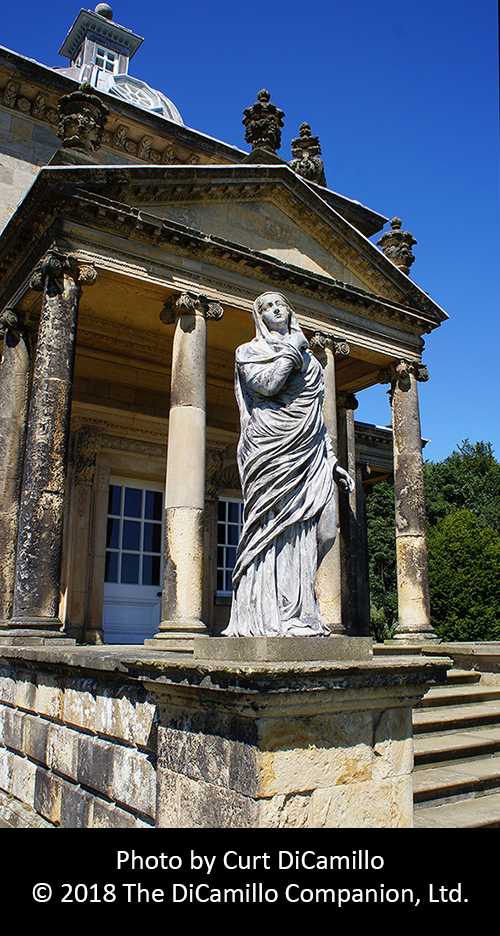
The Temple of the Four Winds
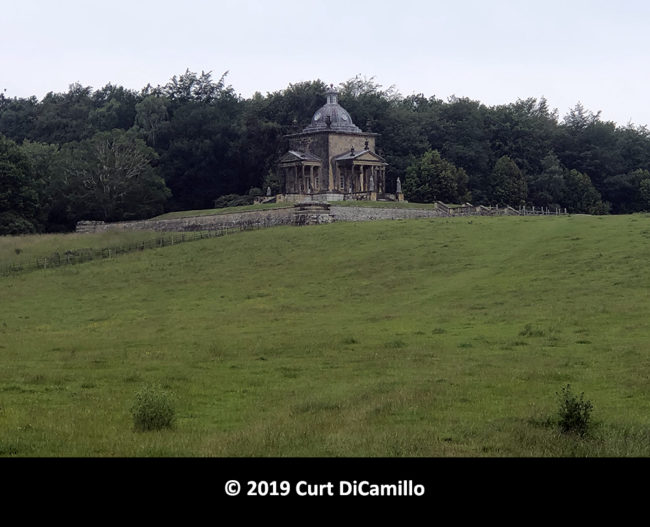
The Temple of the Four Winds from the walk to the mausoleum
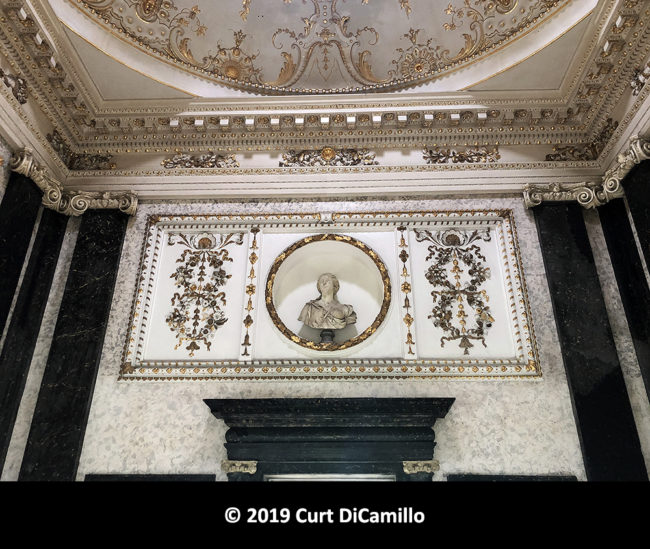
Interior of the Temple of the Four Winds
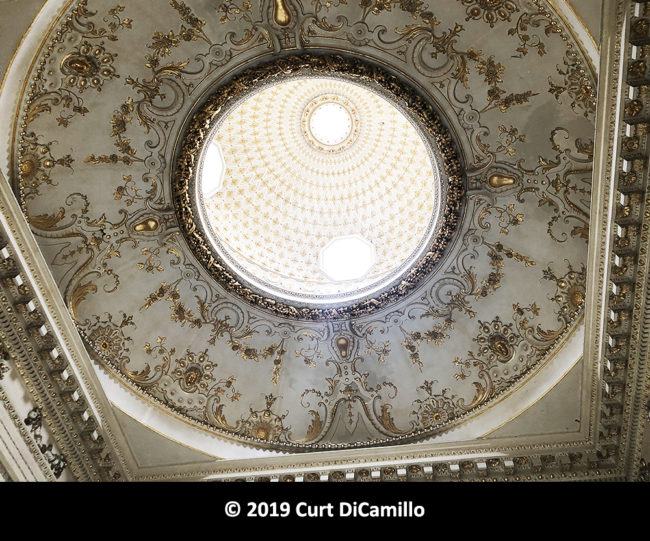
The interior of the dome of The Temple of the Four Winds
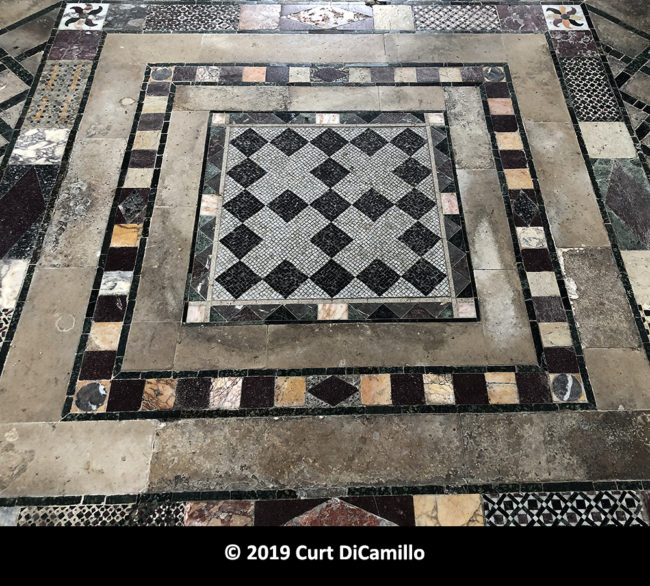
Stonework floor of The Temple of the Four Winds
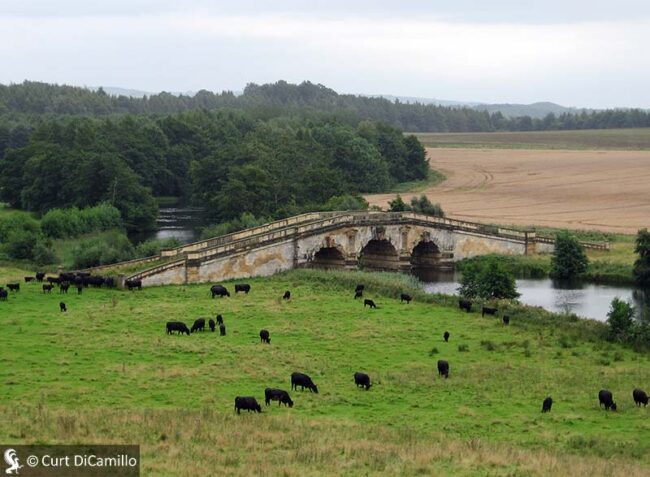
The bridge from the Temple of the Four Winds
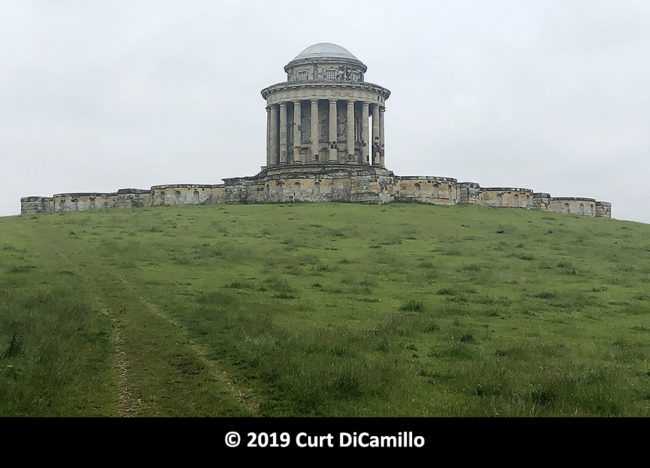
The mausoleum
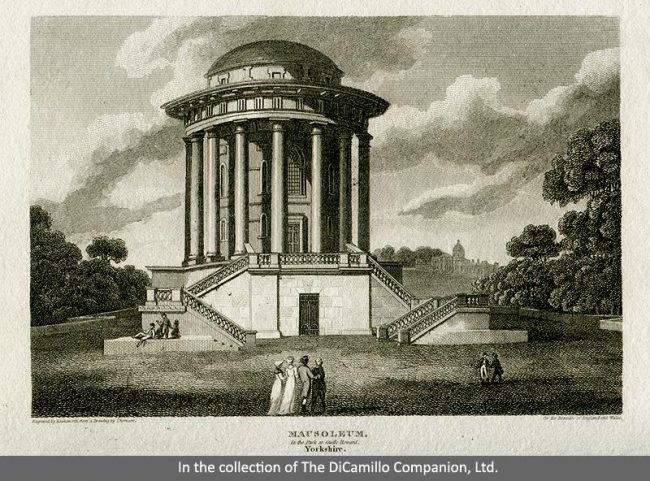
The mausoleum from "The Beauties of England & Wales," 1812.
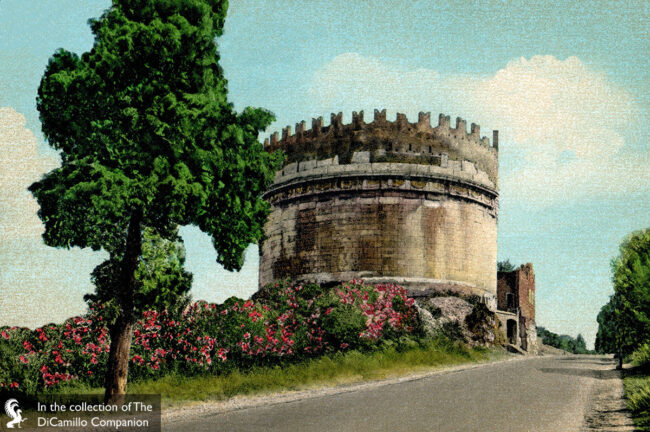
The tomb of Caecelia Metella on the Appian Way, Rome, from a circa 1920s postcard. This famous ancient Roman tomb may have influenced the design of the Castle Howard Mausoleum.
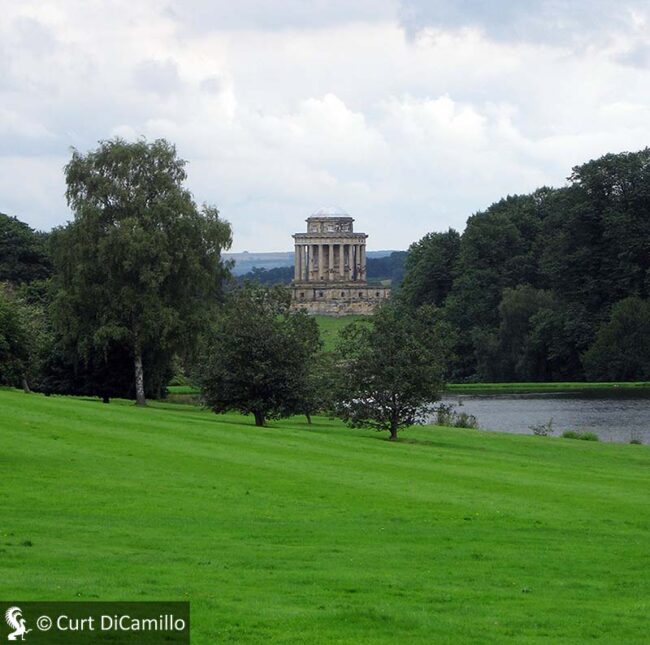
The mausoleum
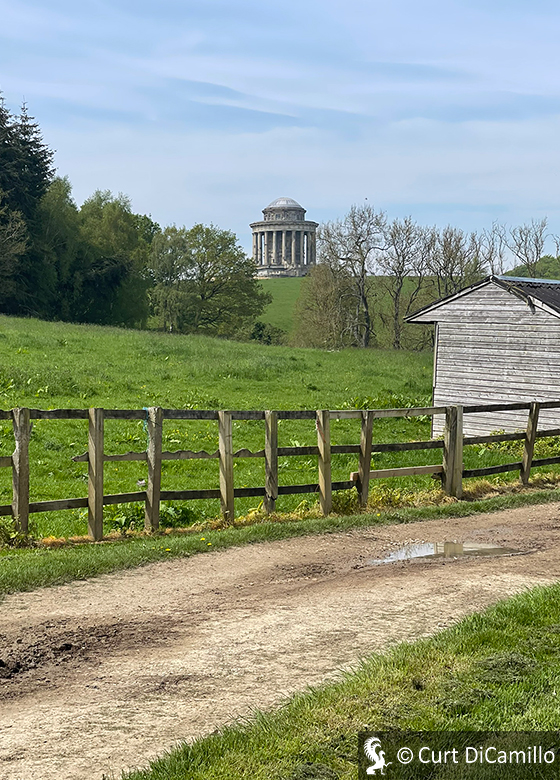
The mausoleum from outside Pretty Wood
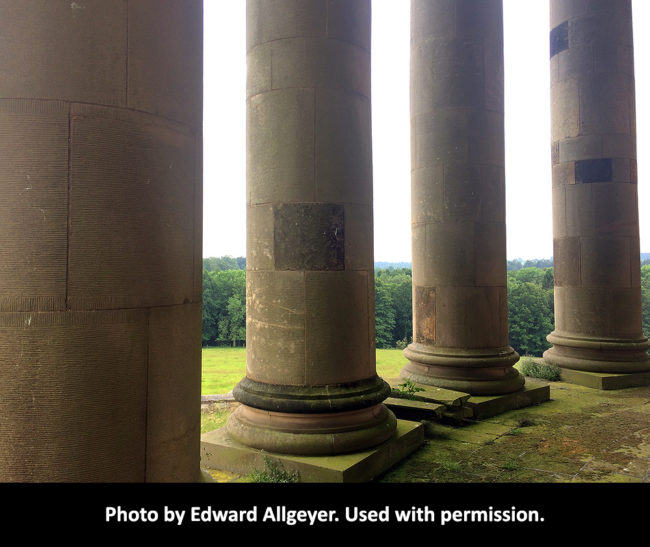
Colonnade of the mausoleum
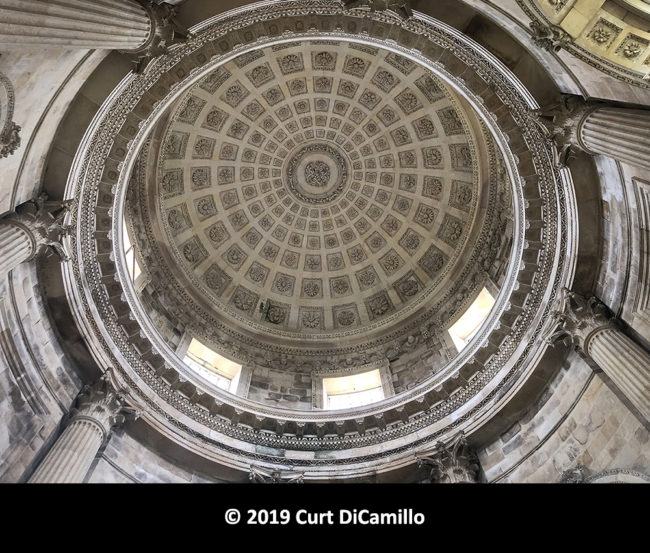
Interior of the mausoleum chapel dome
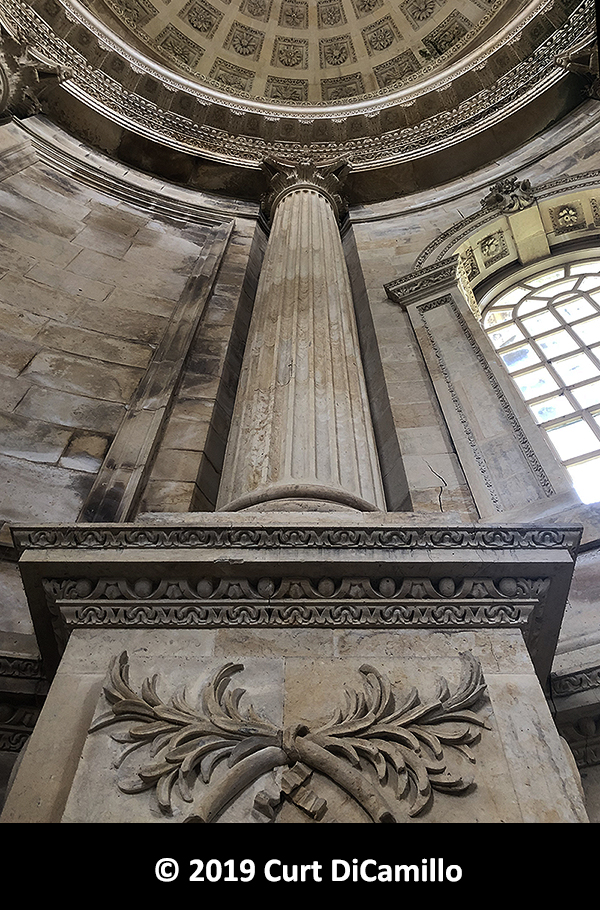
Interior of the mausoleum chapel
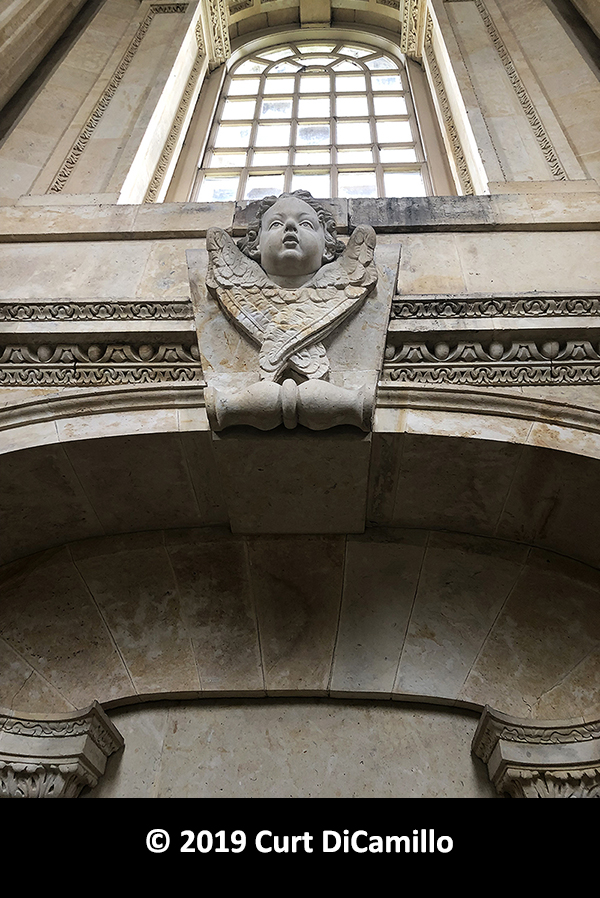
Interior of the mausoleum chapel
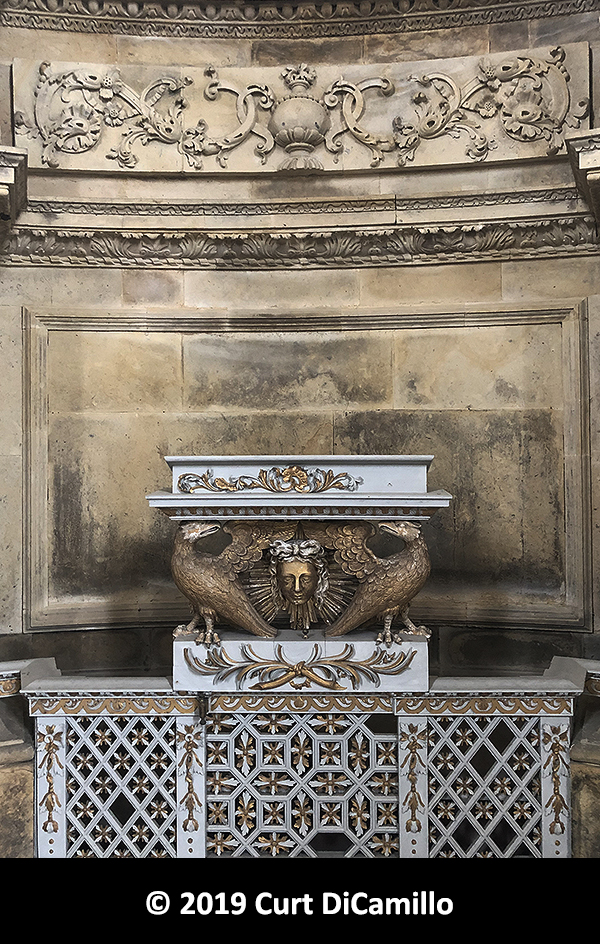
Lectern inside the mausoleum chapel
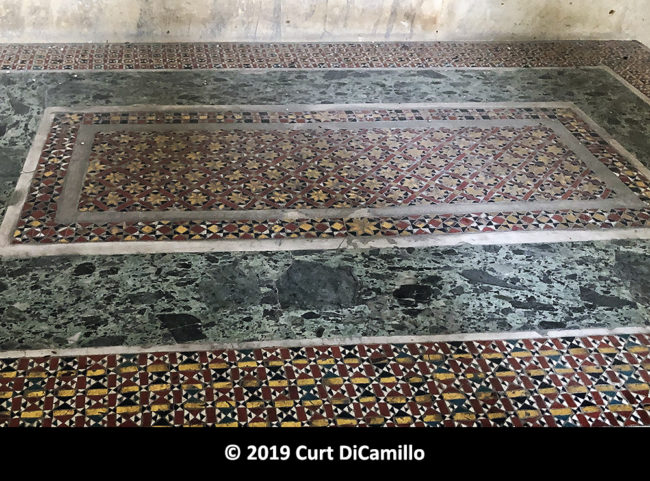
Tabletop inside the mausoleum chapel
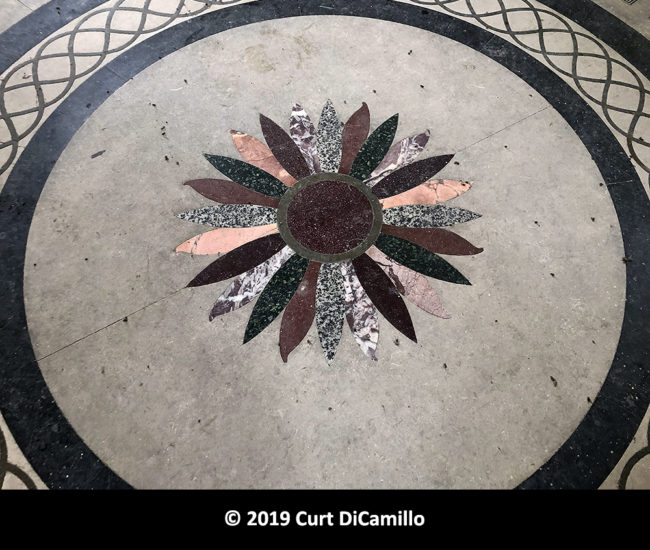
Stonework floor inside the mausoleum
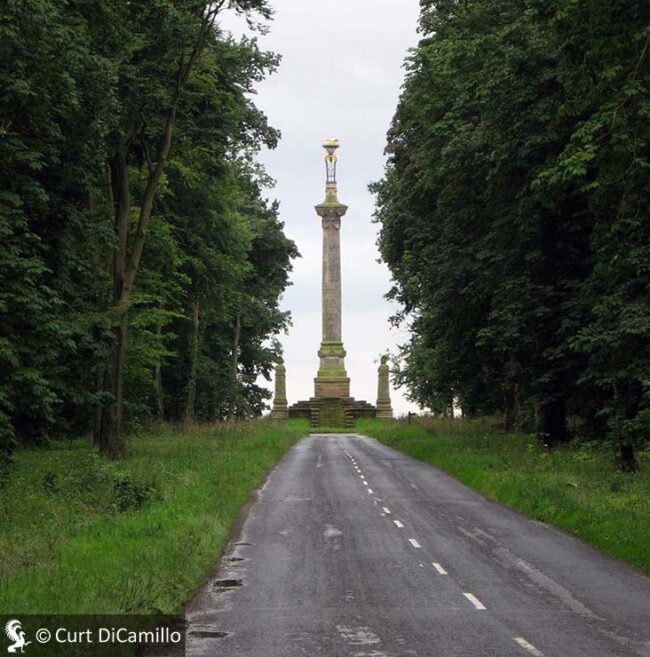
The Carlisle Memorial Column (the 7th Earl's Monument)
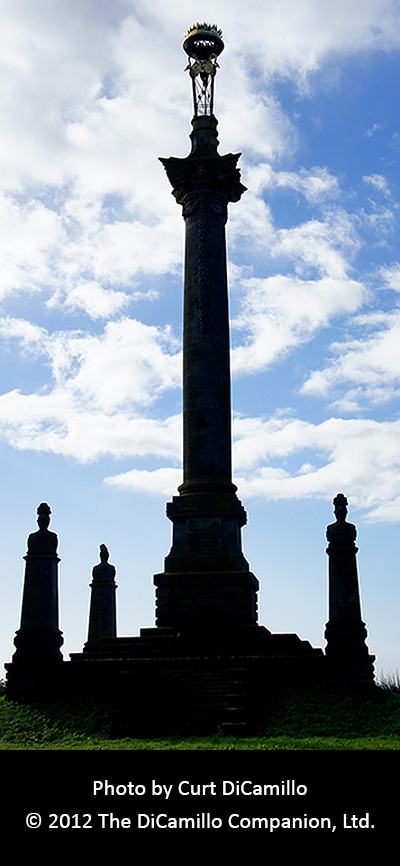
The Carlisle Memorial Column (the 7th Earl's Monument)
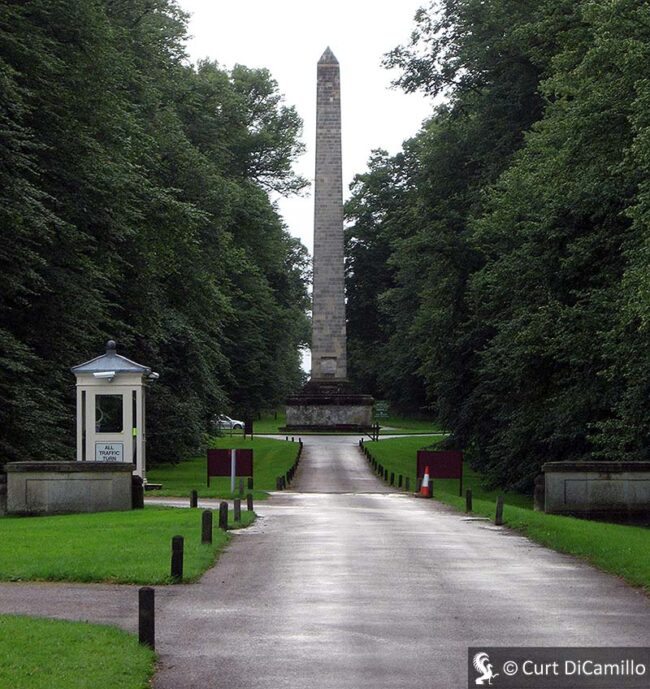
The obelisk
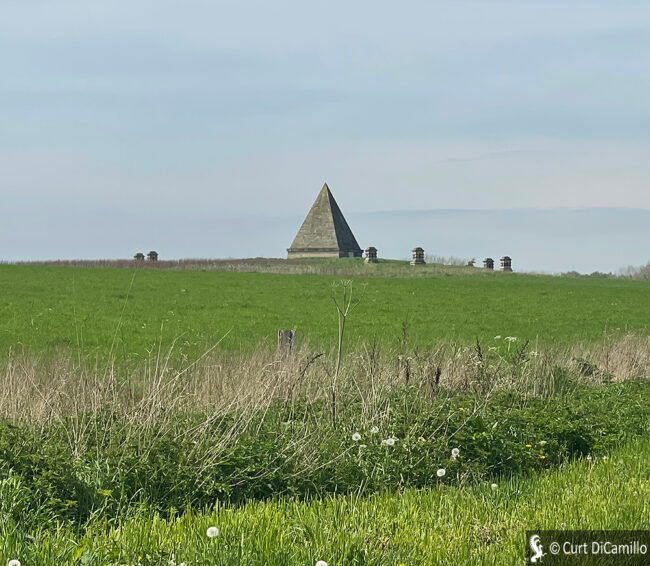
Hawksmoor's large, 30-foot, pyramid.
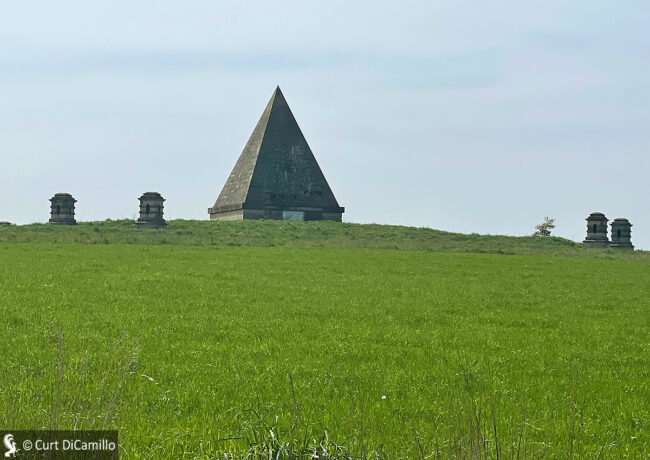
Hawksmoor's large pyramid
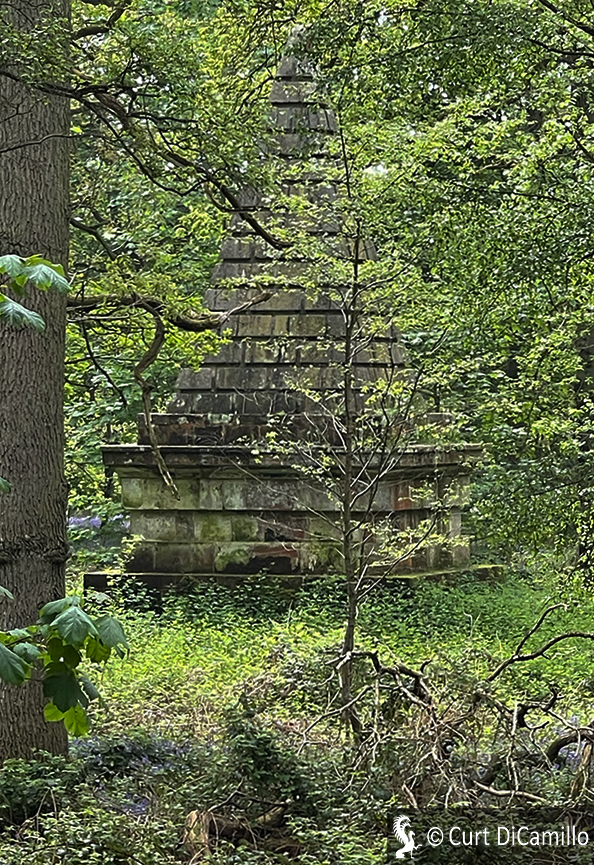
Hawksmoor's small pyramid in Pretty Wood
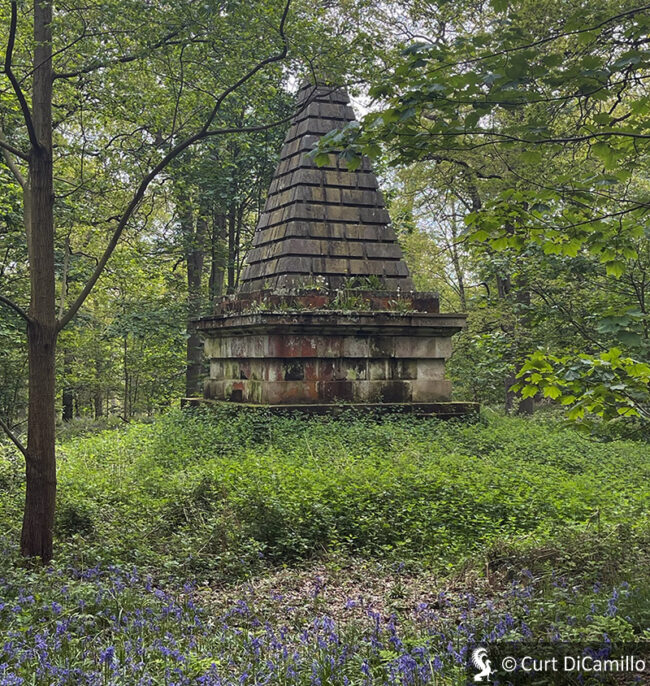
Hawksmoor's small pyramid in Pretty Wood
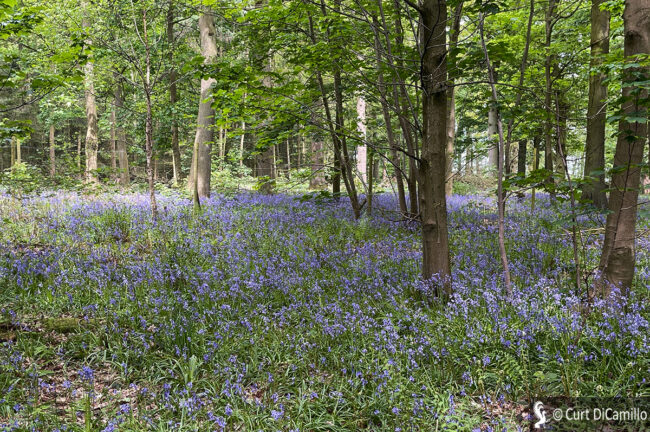
Bluebells in Pretty Wood
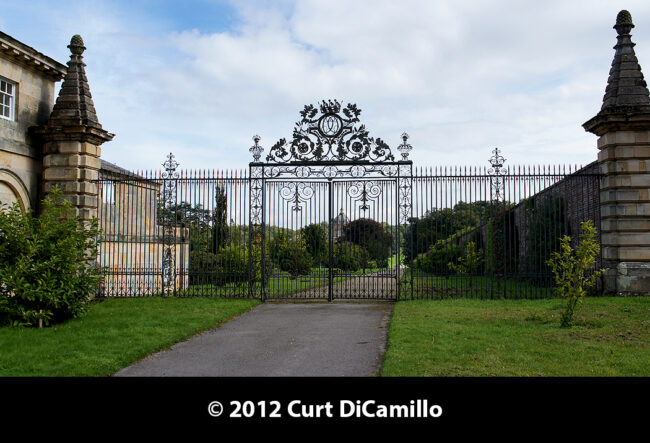
The Victoria Gates on the Broad Walk
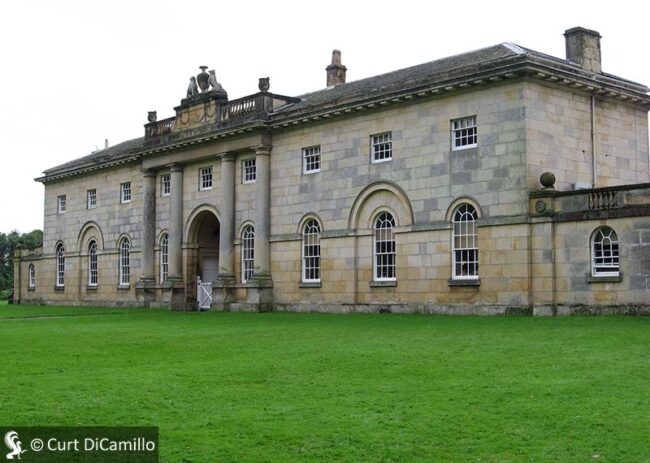
The stables
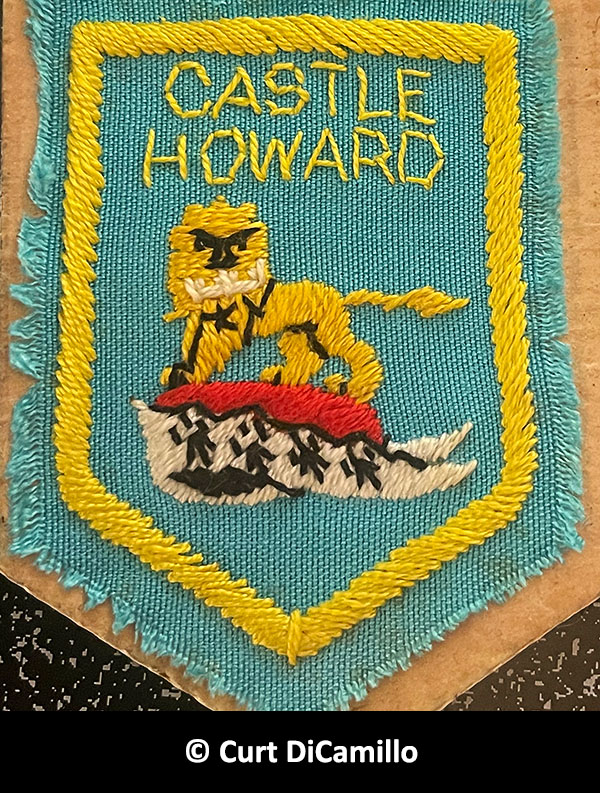
A stitched Castle Howard badge, using an element of the coat of arms of the earls of Carlisle.
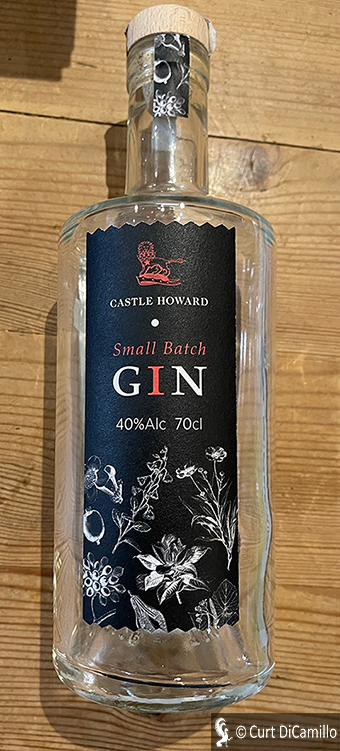
Earlier Houses: The old castle of Henderskelfe was rebuilt in 1683, but gutted by fire 10 years later and replaced by the current house.
Built / Designed For: Charles Howard, 3rd Earl of Carlisle
House & Family History: After the burning of the earlier house, the "Old Castle of Henderskelfe," the young Charles Howard, 3rd Earl of Carlisle, recently appointed first lord of the treasury, was determined to build a house befitting his newly elevated status. The earl, who saw himself as the Sun King of Yorkshire, was very likely inspired by the French Sun King, Louis XIV, and his work at Versailles. In 1698 the earl commissioned William Talman to build him a new house; however, the two soon disagreed and Talman, who had a reputation for being difficult, was dismissed. The following year the earl made the surprising choice of John Vanbrugh as the architect for his new limestone house (the finished product cost the immense sum of £78,000, worth approximately £154 million in inflation-adjusted 2016 values, using the labour value of the commodity index). Vanbrugh was then primarily a playwright who had never designed a house (both Lord Carlisle and Vanbrugh were members of the Kit-Cat Club, which is very likely where their friendship developed). Vanbrugh's grand ideas, ably assisted by Nicholas Hawksmoor (a real architect) and enthusiastically backed by his patron and client, created one of the most magnificent houses of the 18th century. The great dome, which soars 80 feet, was the first on a private house in Britain. The scagliola in the Great Hall was one of the earliest examples in England of this mixture of gypsum, plaster, and glue. Frederick, the 5th Earl, commissioned C.H. Tatham in 1805 to finish the interior of the west wing, the chapel, and the museum room. Originally planned as a columned dining hall, the chapel has a ceiling based on the Chapel Royal in St. James's Palace. George, the 9th Earl, was a painter in his own right (in the Pre-Raphaelite style); his friend Edward Burne-Jones designed stained glass windows for the chapel, which were executed by William Morris. During World War II the house was occupied by a girls' school. In 1940 a fire engulfed Castle Howard, gutting the entire east and central sections of the south façade and destroying the dome. Many important interiors, including the garden hall and the high saloon were lost. The great dome was restored in 1960 by George Howard, who commissioned the Canadian artist Scott Medd to restore Pellegrini's fresco of Phaeton falling from his father's chariot. In 1982 the artist Felix Kelly completed murals in the garden room; the murals were meant to evoke Claudian vistas as seen through "windows," the latter of which were designed by the architect Julian Bicknell. The murals (commissioned by his close friend George Howard, then chairman of the BBC) were used in the 1981 TV mini series "Brideshead Revisited" (passed off as the work of Charles Ryder, played by Jeremy Irons), which was famously filmed at Castle Howard. The 2008 motion picture of "Brideshead Revisited," starring Emma Thompson as Lady Marchmain, was also filmed at Castle Howard. Sanssouci, the Potsdam complex begun as the summer palace of Frederick the Great in the 1740s, includes New Palace, a 1760s building in the Prussian Baroque style that was clearly influenced in its design by Castle Howard. Hampton Mansion in Towson, Maryland, also has links to Castle Howard. Hampton was originally part of the Northampton land grant given to Col. Henry Darnall, a relative of Lord Baltimore, in 1695. His heirs sold the land on April 2, 1745 to Col. Charles Ridgely. The colonel's son, Captain Charles Ridgely, greatly expanded the estate and, in 1783, began construction of the house, which, he said, was inspired by Castle Howard (he was related to the Howards through his mother's family). Considered one of the most important examples of Georgian architecture in America, when it was finished in 1790, Hampton Mansion was the largest private home in the United States. George William Frederick Howard, 7th Earl of Carlisle, knight of the garter, privy councillor, member of Parliament, and viceroy of Ireland, was also, a bit surprisingly, a passionate lover of poetry (he exchanged sonnets with William Wordsworth). One of the 7th Earl's most lasting legacies is the Morpeth Roll, presented to him in 1841 by the people of Ireland as a parting gift when he left his post as chief secretary for Ireland (he was then Viscount Morpeth). The Morpeth Roll is a unique document; more than 1,370 feet long and comprised of 652 pieces of paper, the document contains the signatures of over 160,000 people across Ireland. The roll is an extraordinarily valuable document because its information predates the Great Famine and substitutes for Irish censuses lost during the civil war. In 1869-70 the Carlisle Memorial Column was erected on the Castle Howard Estate to the memory of the 7th Earl (see the "Gardens, Outbuildings, Chapel & Church History" section for more information on the column). As one of the major country houses of Britain, Castle Howard has had a string of important visitors, including Queen Victoria, who came here in 1850 (see "Images" section). Castle Howard has been open to the public since 1952.
Collections: The bedroom passage leading to Lady Georgiana's bedroom is hung with a collection of 18th century prints of Raphael's decorations for the Vatican Loggia, purchased by the 6th Earl of Carlisle in 1827 (see "Images" section). Henry Howard, 4th Earl of Carlisle (1694-1758), a great connoisseur, formed an outstanding collection of 170 classical and post-classical gems (intaglios and cameos) at Castle Howard between 1739 and 1758, the majority of which were purchased by the British Museum in 1890. The collecting of antique gems in Britain reached such an intense and competitive level in the 18th century that the French gem expert P.J. Mariette, writing in "Traité des Pierres Gravées" in the 1750s, said "nowhere is more love shown for classical gems" [than in England]. One of Canaletto's masterpieces, "Bacino di San Marco, Venice," purchased by the 4th Earl of Carlisle, has been in the collection of the Museum of Fine Arts, Boston, since 1939, where it is considered among the finest Canalettos in America. A fine pair of Canalettos of the views of the Piazzo San Marco and the Piazzetta, also purchased by the 4th Earl, are today in the collection of the National Gallery of Art, Washington. An unusual circa 1705 walnut bureau cabinet featuring five carved and gilded figures on the cornice, formerly in the collection at Castle Howard, is today in The Burrell Collection, Glasgow. In 1944 a significant number of pieces from the Castle Howard art collection were sold. Gian Lorenzo Bernini's "Cardinal dal Pozzo" was sold by negotiation to The National Gallery of Scotland 1986-87 for £3 million. A sale of various contents of Castle Howard was sold at auction November 11-13, 1991 by Sotheby's. Michelangelo's "Mourning Woman" drawing was sold for £5,943,500 at Sotheby's in London, July 11, 2001. Sir Joshua Reynolds's "Portrait of Omai" was sold November 29, 2001 at Sotheby's for £10,343,500 (its export to Ireland by the high bidder, John Magnier, was refused by the UK government. Magnier declined to sell it to Tate Britain for the £12.5 million the Museum had raised in 2003, so Magnier lent it instead to the National Gallery of Ireland for five years under a temporary export license, which, in 2012, was not extended, so Magnier has had to keep the painting in the UK). On July 8, 2015 nine items from the Castle Howard collection were sold at auction by Sotheby's in London, raising £10.75 million for the maintenance of the estate (£12.7 million, including Sotheby's commission). Included in the sale was the famous 1542 half-length portrait of Henry VIII from the workshop of Hans Holbein the Younger, which brought £965,000. In 2016 the Fitzwilliam Museum, Cambridge, paid £1.2 million for an important pair of pietre dure Roman cabinets; they are the only such cabinets today in a public collection in Britain (see photo in "Images" section). Henry Howard, 4th Earl of Carlisle, purchased the cabinets in Rome during his second Grand Tour (1738-39). These exceptional cabinets, made in the 17th century, almost certainly for a member of the Borghese family, each sit on a circa 1800 Neoclassical stand. The stands, very likely made to the designs of Charles Heathcote Tatham, were made specifically to display the cabinets in the Long Gallery at Castle Howard. In 2017 sixty-two Roman sculptures and antiquities and twenty-seven 18th century pieces, many of them collected by the 4th and 5th Earls of Carlisle on their Grand Tours, were transferred to the ownership of the National Museums Liverpool. The 89 pieces were accepted by the UK government in lieu of a £5.4 million inheritance tax bill and will remain on display at Castle Howard (on loan from the Liverpool Museums). In the collection at CH is a Delft flower pagoda that is considered unique in the world (see photo in “Images” section). It's a circa 1695, five-story, tin-glazed earthenware pagoda with winged sphinxes, Moors, squirrels, Chinese figures, and foliage. The pagoda is believed to be the most elaborate and fanciful in existence and has probably been at Castle Howard since it was made. On May 6, 2025, Sotheby's will auction in Geneva 30 Faberge animals from the Castle Howard collection.
Comments: Castle Howard is generally considered the finest private residence in Yorkshire and the first great British house of the 18th century. Hugh Montgomery-Massingberd called the approach to Castle Howard "probably the most dramatic of all the great houses of England and Wales." Sir Sacheverell Sitwell, writing in "British Architects and Craftsmen," considered Hawksmoor's mausoleum and bridge at Castle Howard to be "greater works of art than many of our Cathedrals. They belong to the class of Landscape buildings, and probably of their kind, they are as beautiful as anything in Europe." Horace Walpole, writing in the 18th century on Castle Howard: "Nobody had informed me at one view I should see a palace, a town, a fortified city, temples on high places, woods worthy of being each a metropolis of the Druids, the noblest lawn in the world fenced by half the horizon, and a mausoleum that would tempt one to be buried alive; in short, I have seen gigantic places before, but never a sublime one."
Garden & Outbuildings: Containing over 200 listed buildings, the Castle Howard Estate today spans 9,000 acres (in the 18th century the estate stood at 100,000 acres), of which 5,000 is farmed (the estate also includes six villages) and 1,000 are devoted to gardens and follies, including the Temple of the Four Winds (originally the Temple of Diana), modeled on Palladio's Villa Rotonda and the building in England which has the most in common with the built architecture of Palladio. Gervase Jackson-Stops believed that the follies in the garden were deliberately Greek and Egyptian in design to complement Vanbrugh's Roman Temple of the Four Winds—thus representing the three great civilizations of the past. Nicholas Hawksmoor's mausoleum, which Horace Walpole famously quipped was so beautiful it would tempt one to be buried alive, is one of the most important buildings of its kind in Britain and is of international importance (it's considered the finest mausoleum in northern Europe). The outer stairs to the mausoleum are modeled on those at Chiswick House, while its famous chapel has a 70-foot dome modeled on the Pantheon in Rome. The design was also possibly influenced by two buildings in Rome, built centuries apart: the 1st century BC Tomb of Caecilia Metella, a mausoleum located just outside Rome on the Appian Way (see "Images" section); and Bramante's early 16th century Tempietto, in the courtyard of San Pietro in Montorio. The mausoleum's crypt has 63 niches for bodily remains, only half of which are occupied today. The mausoleum received a £1 million grant from English Heritage in 1979 to prevent its collapse, yet it still remains on the English Heritage List of Buildings at Risk and is estimated to cost £10 to £15 million to fully restore. One of Castle Howard's most mysterious follies is the large pyramid (its exterior walls are 30 feet tall) that sits proudly in the landscape (see "Images" section). Designed by Hawksmoor in 1728, the Grade I-listed folly, whose interior contains a colossal bust of Lord William Howard on a stone plinth, was restored in 2015 (Lord William was the 3rd Earl’s great, great, great, grandfather and founder of the Carlisle branch of the Howard family). On Bulmer Hill stands the Carlisle Memorial Column, erected 1869-77 by public subscription and dedicated to the memory of George Howard, 7th Earl of Carlisle. The 120-foot stone tower is topped by an ornamental Greek brazier, or urn, with leaping copper flames. By 2002 the original cast iron beacon had been lost and a £60,000 project was begun to reproduce the beacon. The result was a 15-foot-high cast iron structure with a wrought iron basket and braces and gilded copper flames. The beacon weighs approximately four tons and sits on a ten-foot-tall Greek tripod. The column is inscribed: "AD MDCCCLXIX: IN PRIVATE LIFE WAS LOVED / BY ALL WHO KNEW HIM / BY HIS PUBLIC CONDUCT / WON the RESPECT of his COUNTRY / and LEFT THE BRIGHT EXAMPLE / OF A TRVE PATRIOT / AND EARNEST CHRISTIAN / VIIth EARL of CARLISLE." In addition to all of these follies, Castle Howard's grounds boasts one of the UK's largest collections of outdoor sculpture. The south lake was created in the early 1720s, while the great lake, to the north of the house, was built by the 5th Earl in the 1790s. The 5th Earl also installed the Prince of Wales Fountain in the south lake in the 1850s. Its main jet reaches a height of 40 feet, surrounded by subsidiary jets that represent the feathers of the prince of Wales. One of the most famous features in the Castle Howard landscape is the Atlas Fountain, on the south facade of the house. The fountain was commissioned by the 7th Earl in 1850 from the landscape gardener William Andrews Nesfield, who engaged the sculptor John Thomas for much of the carving.
Chapel & Church: C.H. Tatham finished the interior of the chapel in 1805. Originally planned as a columned dining hall, the chapel has a ceiling based on the Chapel Royal in St. James's Palace, London. Edward Burne-Jones designed the stained glass windows, which were executed by William Morris.
Architect: William Andrews Nesfield
Date: 1850sArchitect: Charles Heathchote Tatham
Date: 1801-05Architect: Daniel Garrett
Date: 1737-42Architect: John Vanbrugh
Date: 1714-28Architect: Nicholas Hawksmoor
Date: 1728-36Architect: William Oldham Chambers
Date: Circa 1768-70Vitruvius Britannicus: C. I, pls. 63-71, 1715. C. III, pls. 5, 6, 1725.
John Bernard (J.B.) Burke, published under the title of A Visitation of the Seats and Arms of the Noblemen and Gentlemen of Great Britain and Ireland, among other titles: Vol. I, p. 142, 1852.
John Preston (J.P.) Neale, published under the title of Views of the Seats of Noblemen and Gentlemen in England, Wales, Scotland, and Ireland, among other titles: Vol. V, 1822.
Country Life: XV, 234, 1904. LXI, 884 plan, 948, 1005 [Pictures], 1022, 1043 [Pictures], 1927. LXII, 200 [Outworks], 230 [Outworks], 1927. CXIII, 276 plan, 1953.
Title: Biographical Dictionary of British Architects, 1600-1840, A - HARDBACK
Author: Colvin, Howard
Year Published: 2008
Reference: pg. 411
Publisher: New Haven: Yale University Press
ISBN: 9780300125085
Book Type: Hardback
Title: Harewood Guidebook - 1990s
Author: 7th Earl of Harewood
Year Published: NA
Reference: pg. 5
Publisher: Yorkshire: Harewood House Trust Ltd.
ISBN: 0952102145
Book Type: Softback
Title: Country House Garden: A Grand Tour, The
Author: Jackson-Stops, Gervase; Pipkin, James (Photographer)
Year Published: 1987
Reference: pgs. 132, 195
Publisher: New York: New York Graphic Society (Boston: Little, Brown and Company)
ISBN: 0821216686
Book Type: Hardback
Title: Enlightenment: Discovering the World in the Eighteenth Century
Author: Sloan, Kim; Burnett, Andrew (Editors)
Year Published: 2003
Reference: pg. 136
Publisher: Washington, DC: Smithsonian Books
ISBN: 158834164X
Book Type: Hardback
Title: Burrell Collection, The
Author: Norwich, John Julius (Introduction)
Year Published: 2001
Reference: pg. 134
Publisher: London: HarperCollins Publishers
ISBN: 0902752553
Book Type: Softback
Title: Castle Howard Guidebook - 1997
Author: NA
Year Published: 1997
Reference: pg. 24
Publisher: Yorkshire: Castle Howard Estate Ltd.
ISBN: NA
Book Type: Softback
Title: British Art Journal, The
Author: NA
Year Published: NA
Reference: Autumn 2004, pg. 60
Publisher: London: The British Art Journal
ISBN: 14672006
Book Type: Magazine
Title: National Geographic (magazine)
Author: NA
Year Published: NA
Reference: Nov 1985, pg. 665
Publisher: Washington, DC: National Geographic Society
ISBN: 00279358
Book Type: Magazine
Title: Devonshire Inheritance: Five Centuries of Collecting at Chatsworth, The
Author: Barker, Nicholas
Year Published: 2003
Reference: pg. 66
Publisher: Virginia: Art Services International
ISBN: 0883971380
Book Type: Softback
Title: Treasure Houses of Britain, The - SOFTBACK
Author: Jackson-Stops, Gervase (Editor)
Year Published: 1985
Reference: pgs. 173, 263, 285
Publisher: Washington, DC: National Gallery of Art (New Haven: Yale University Press)
ISBN: 0300035530
Book Type: Softback
Title: MFA: A Guide to the Collection of the Museum of Fine Arts, Boston
Author: Wohlauer, Gilian Shallcross
Year Published: 1999
Reference: pg. 231
Publisher: Boston: Museum of Fine Arts, Boston
ISBN: 0878464727
Book Type: Softback
Title: Newsletter of the Society of Architectural Historians of Great Britain
Author: NA
Year Published: NA
Reference: No. 79, Spring 2003, pg. 13
Publisher: UK: The Society of Architectural Historians of Great Britain
ISBN: NA
Book Type: Magazine
Title: Creating Paradise: The Building of the English Country House, 1660-1880
Author: Wilson, Richard; Mackley, Alan
Year Published: 2000
Reference: pg. 243
Publisher: London: Hambledon and London
ISBN: 1852852526
Book Type: Hardback
Title: Great Houses of England & Wales
Author: Montgomery-Massingberd, Hugh and Sykes, Christopher Simon
Year Published: 1994
Publisher: New York: Rizzoli International Publications, Inc.
ISBN: 0847818241
Book Type: Hardback
Title: Disintegration of a Heritage: Country Houses and their Collections, 1979-1992, The
Author: Sayer, Michael
Year Published: 1993
Publisher: Norfolk: Michael Russell (Publishing)
ISBN: 0859551970
Book Type: Hardback
Title: Historic Houses (magazine)
Author: NA
Year Published: NA
Reference: Spring 1999, pg. 15
Publisher: London: Historic Houses Association
ISBN: 0260-8707
Book Type: Magazine
House Listed: Grade I
Park Listed: Grade I
Current Seat / Home of: The Hon. Nicholas Howard; Howard family here since 1577.
Past Seat / Home of: SEATED AT THE EARLIER HOUSE OF HENDERSKELFE: John de Lascelles, 14th century. Greystoke family, 15th century. Lord Thomas Dacre, 1488-1525; Dacre family here until 1577. Howard family, 1577-1699. SEATED AT CURRENT HOUSE: Charles Howard, 3rd Earl of Carlisle, 1699-1738; Henry Howard, 4th Earl of Carlisle, 1738-58; Frederick Howard, 5th Earl of Carlisle, 1758-1825; William George Howard, 8th Earl of Carlisle, 1864-89; George James Howard, 9th Earl of Carlisle, 1889-1911; Major George Anthony Geoffrey Howard, Baron Howard of Henderskelfe, 1944-84.
Current Ownership Type: Individual / Family Trust
Primary Current Ownership Use: Private Home
Ownership Details: Castle Howard is jointly owned by the sons of the late Baron Howard of Henderskelfe via Castle Howard Estate Ltd.
House Open to Public: Yes
Phone: 01653-648-444
Fax: 01653-648-529
Email: [email protected]
Website: https://www.castlehoward.co.uk/
Awards: HHA/Christie's Garden of the Year Award 2011.
Historic Houses Member: Yes